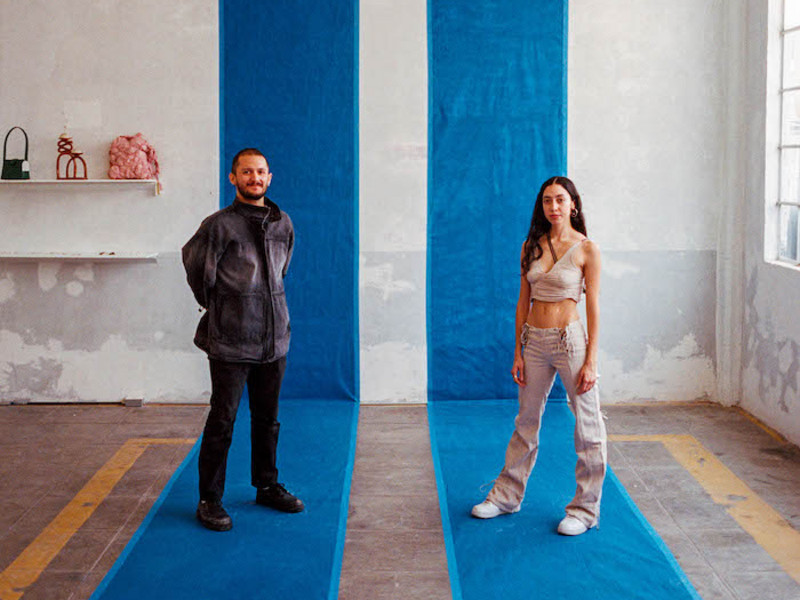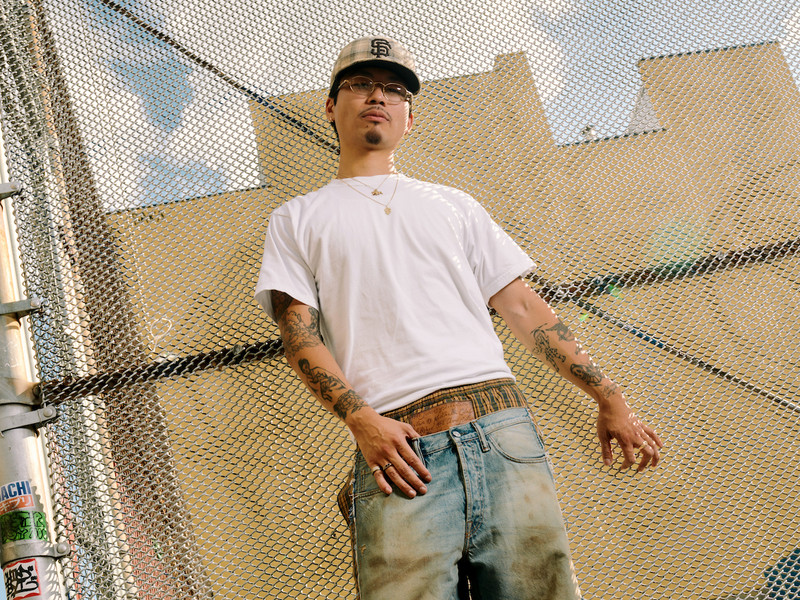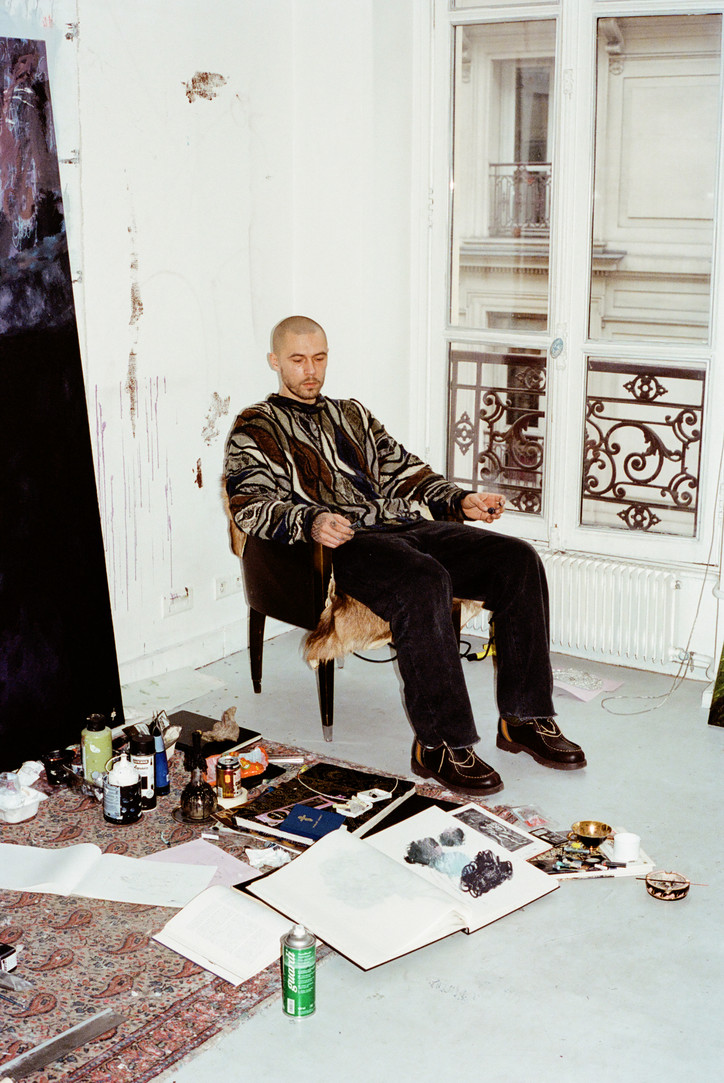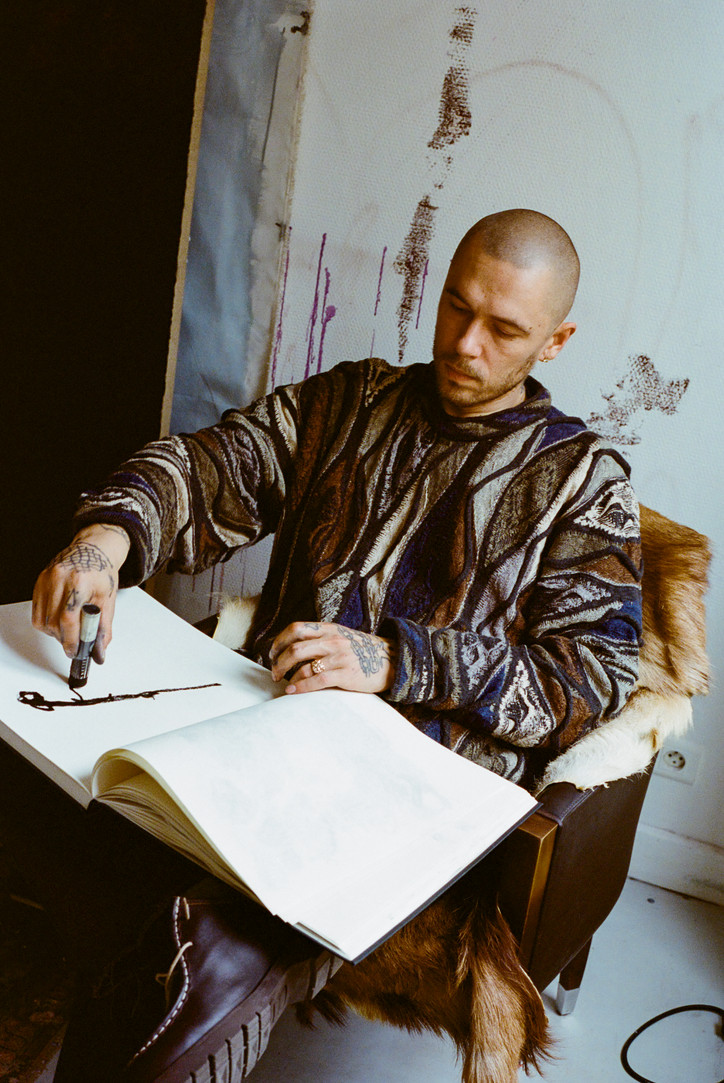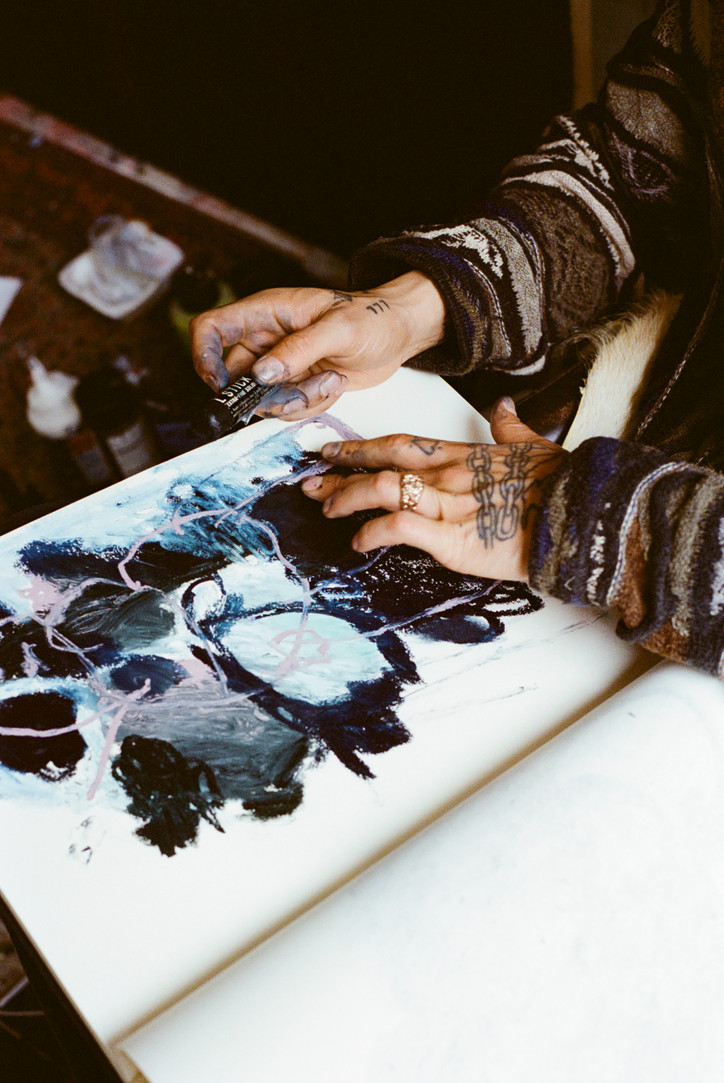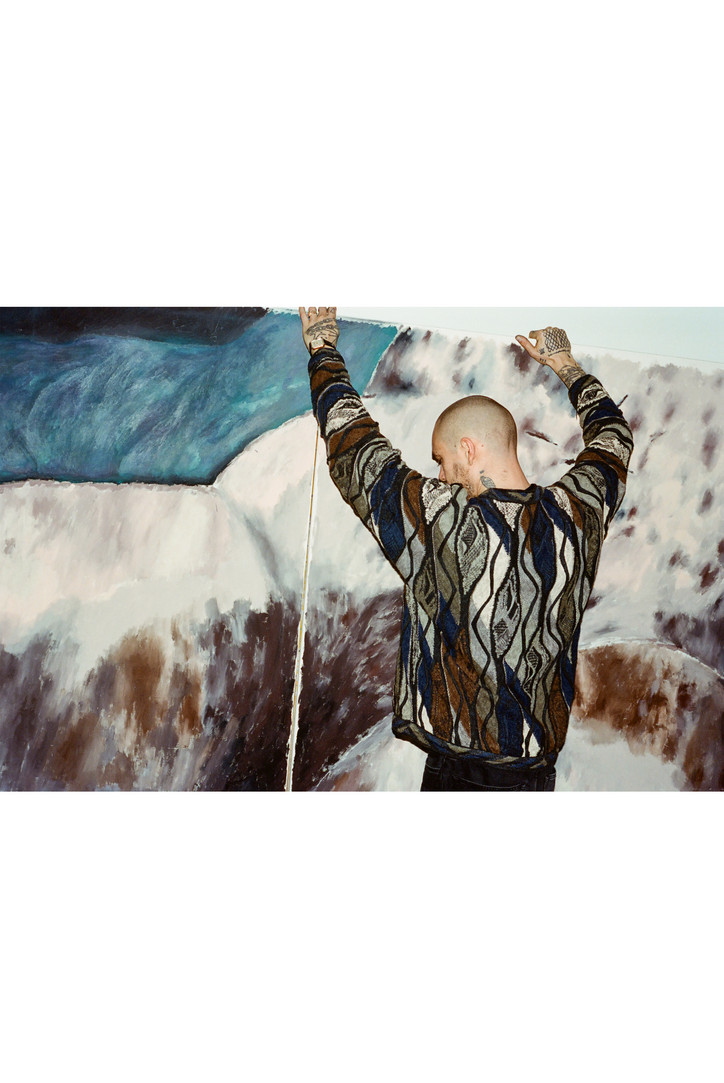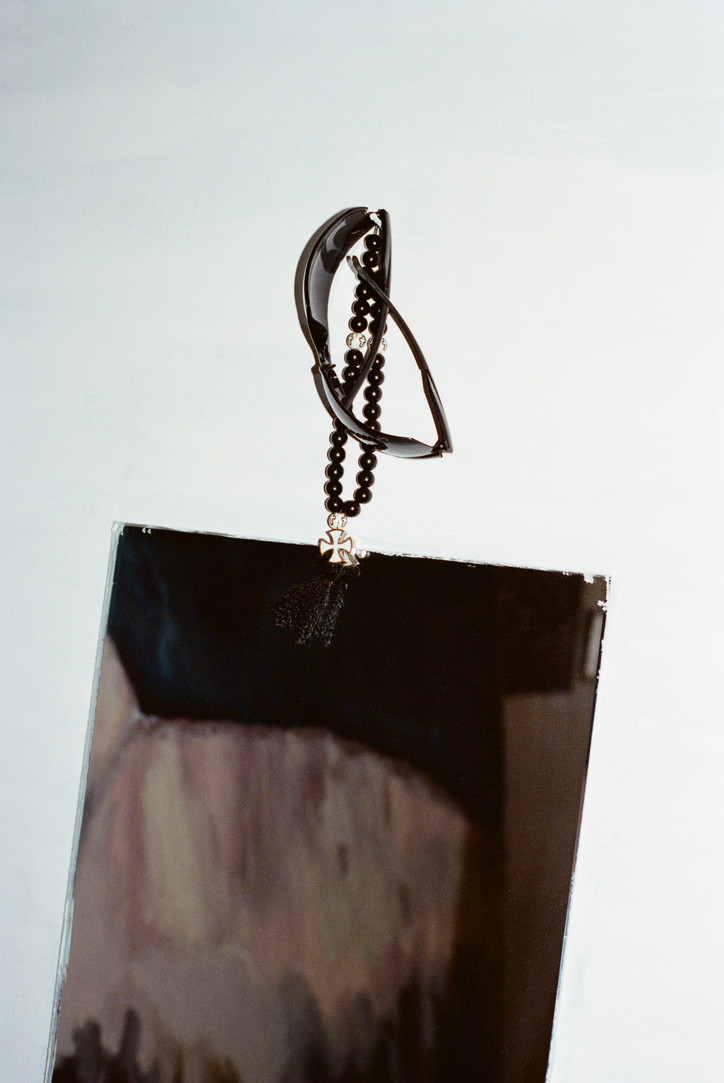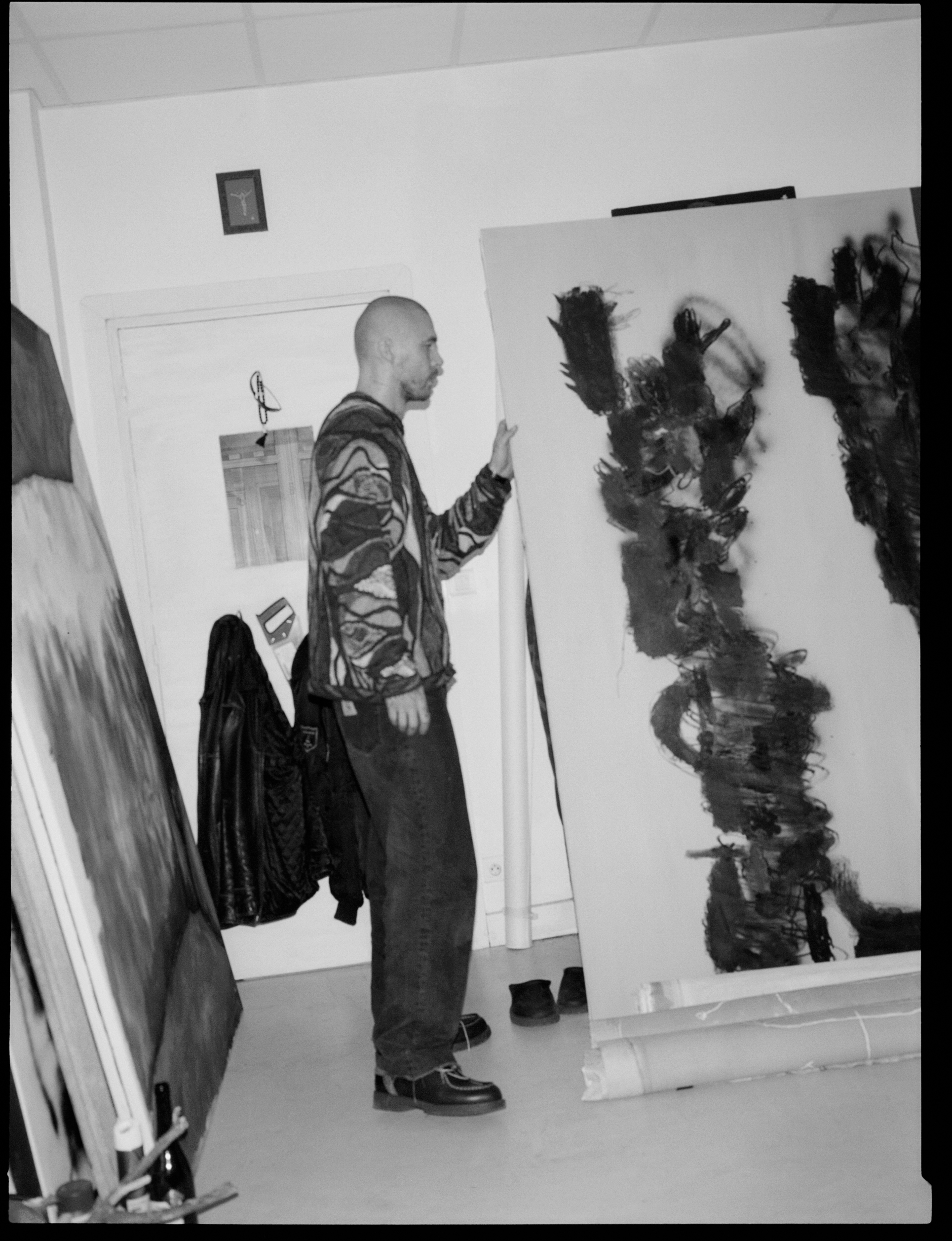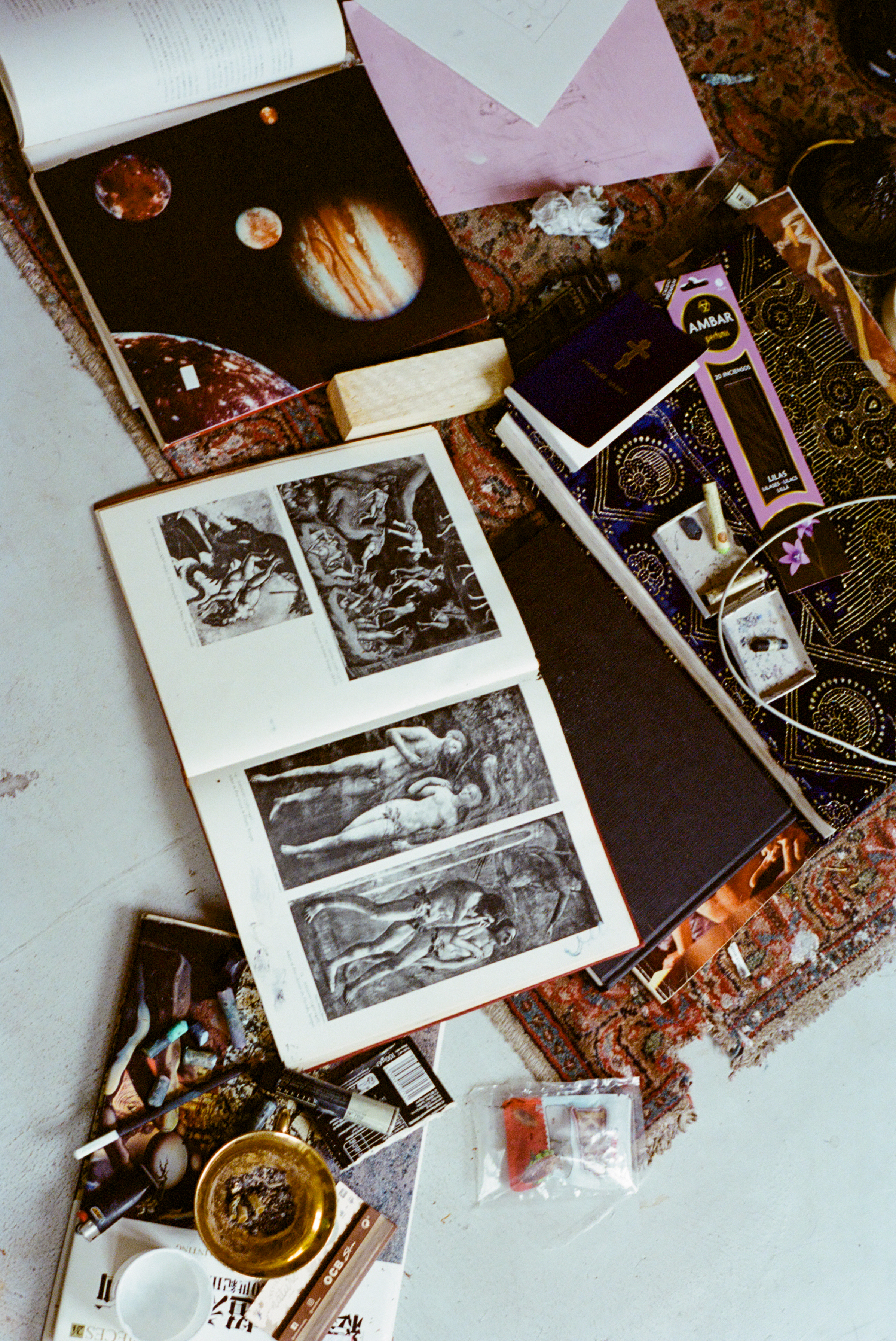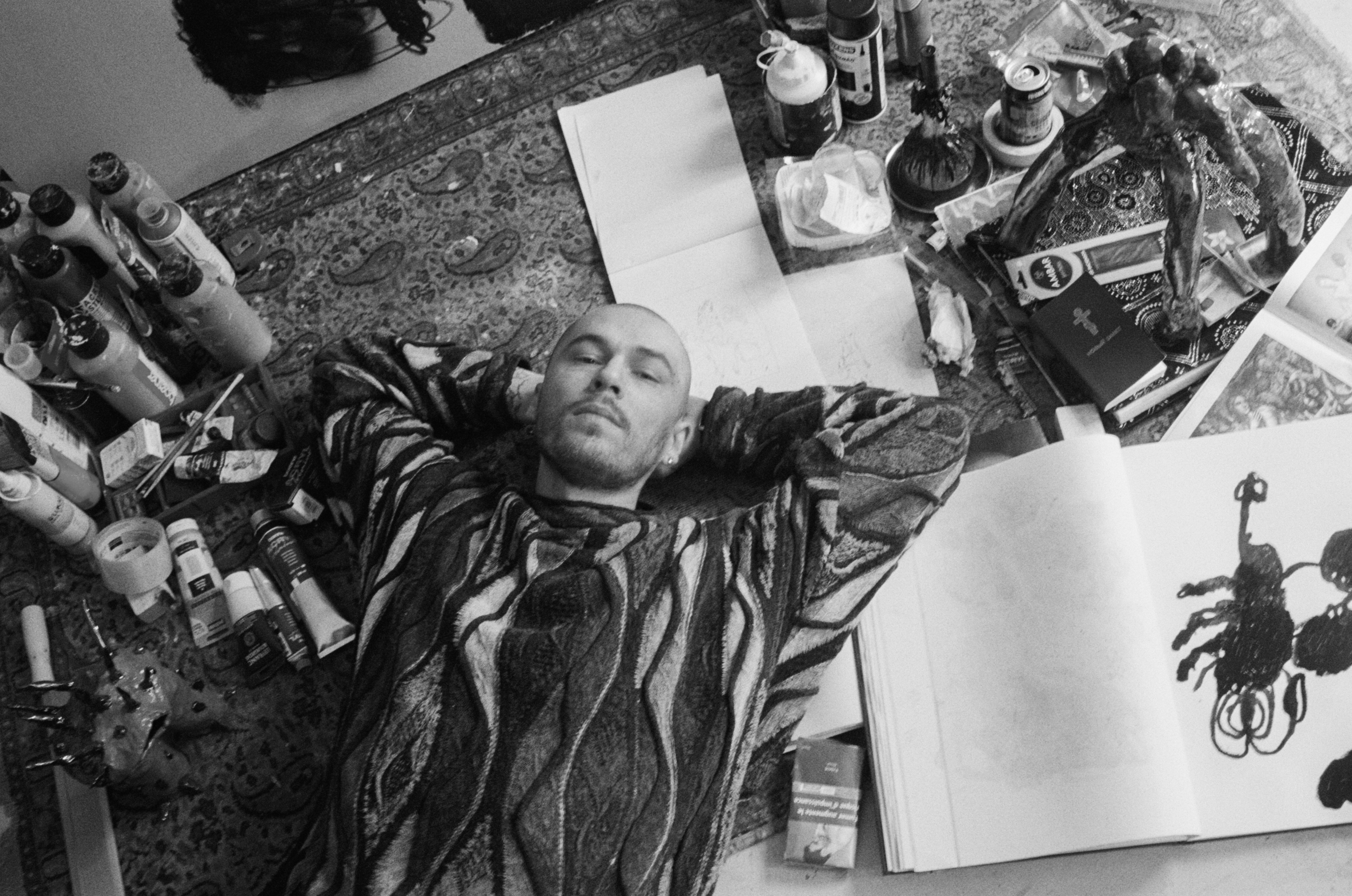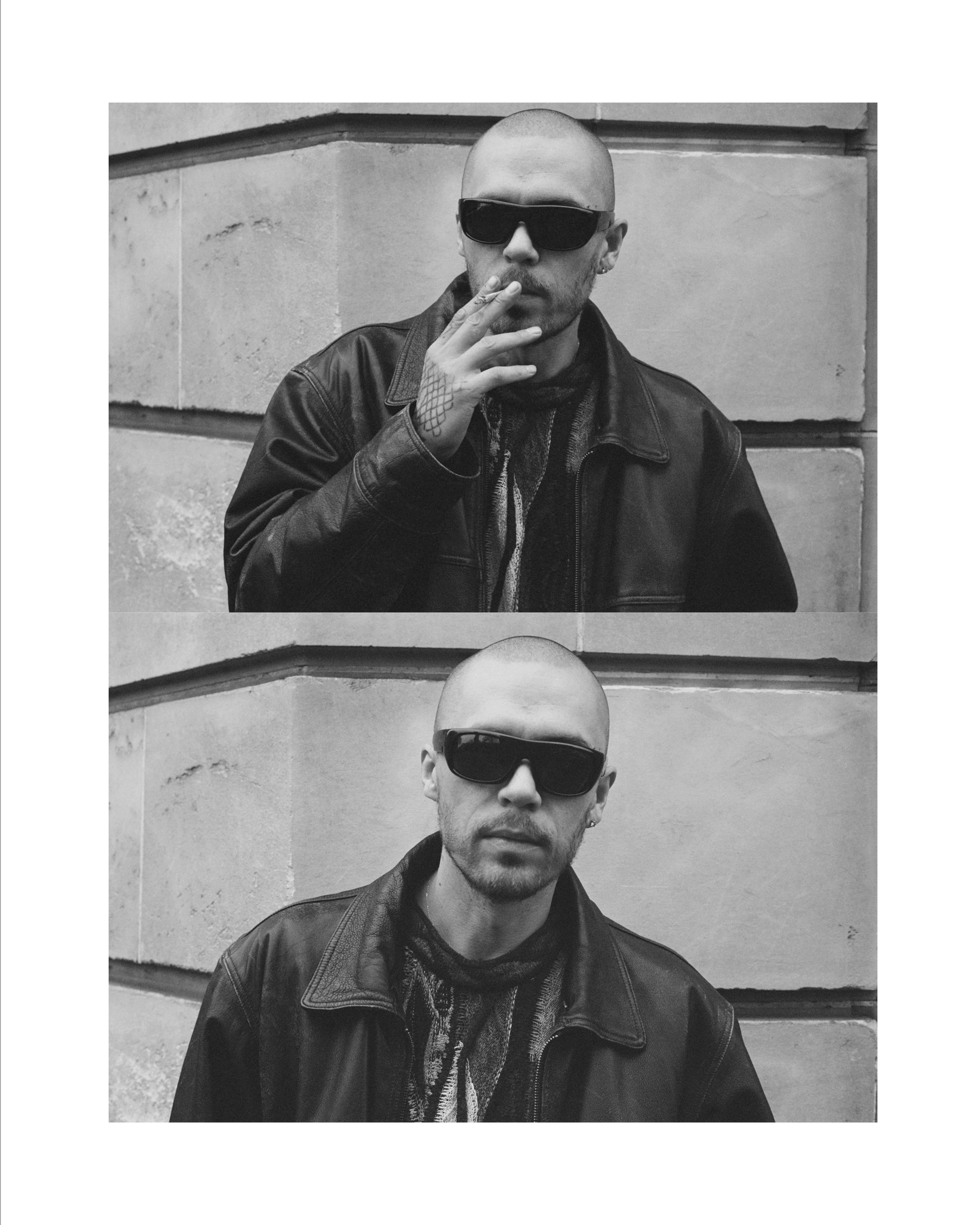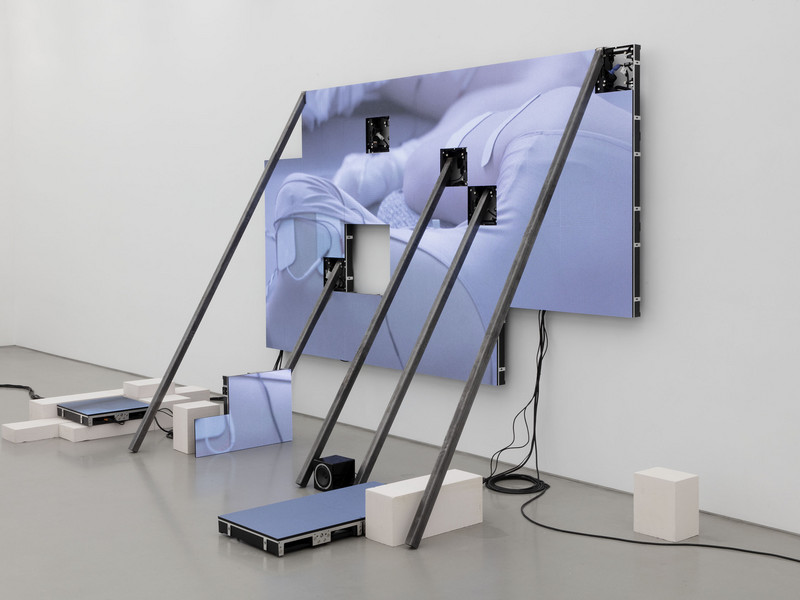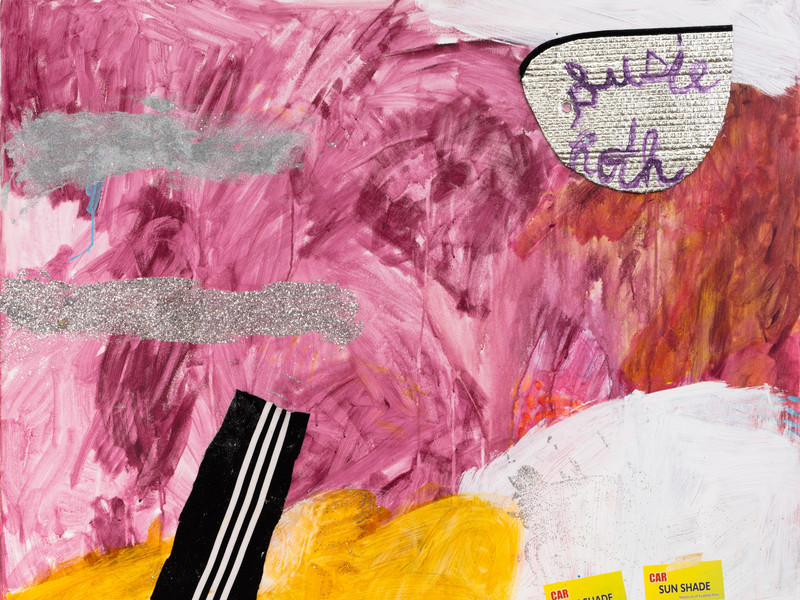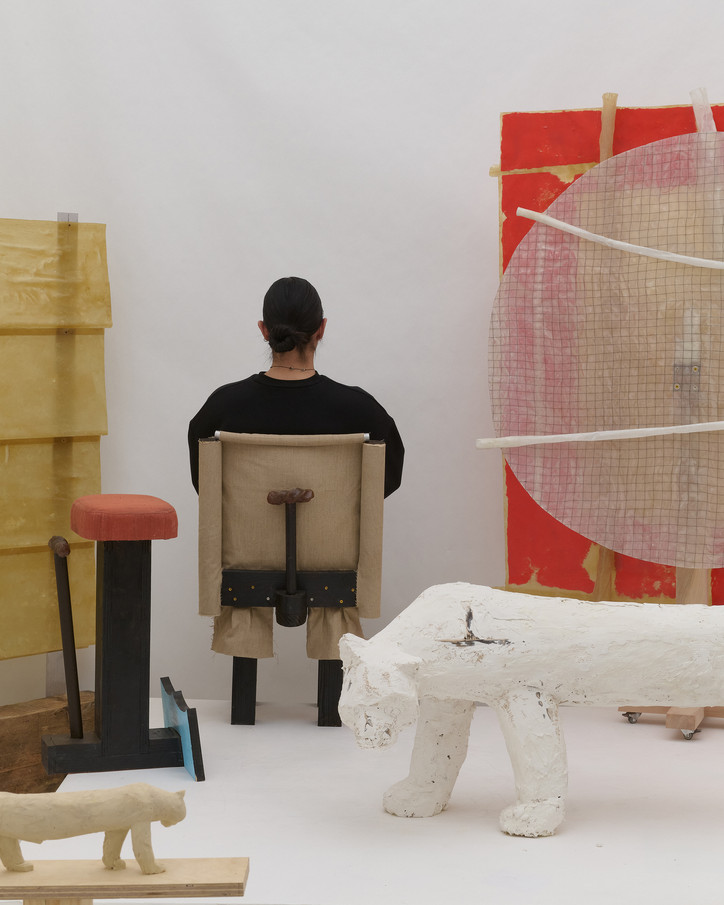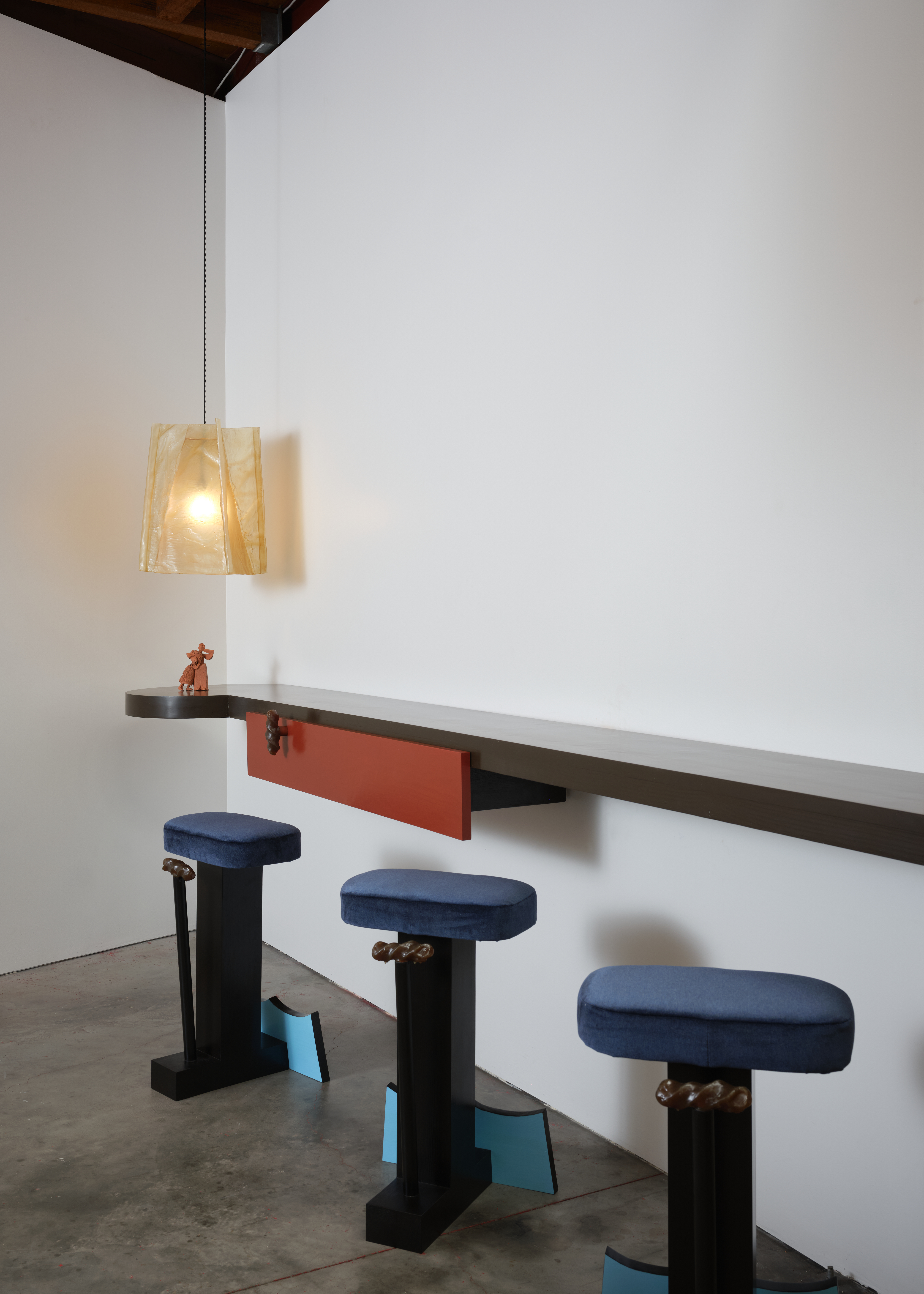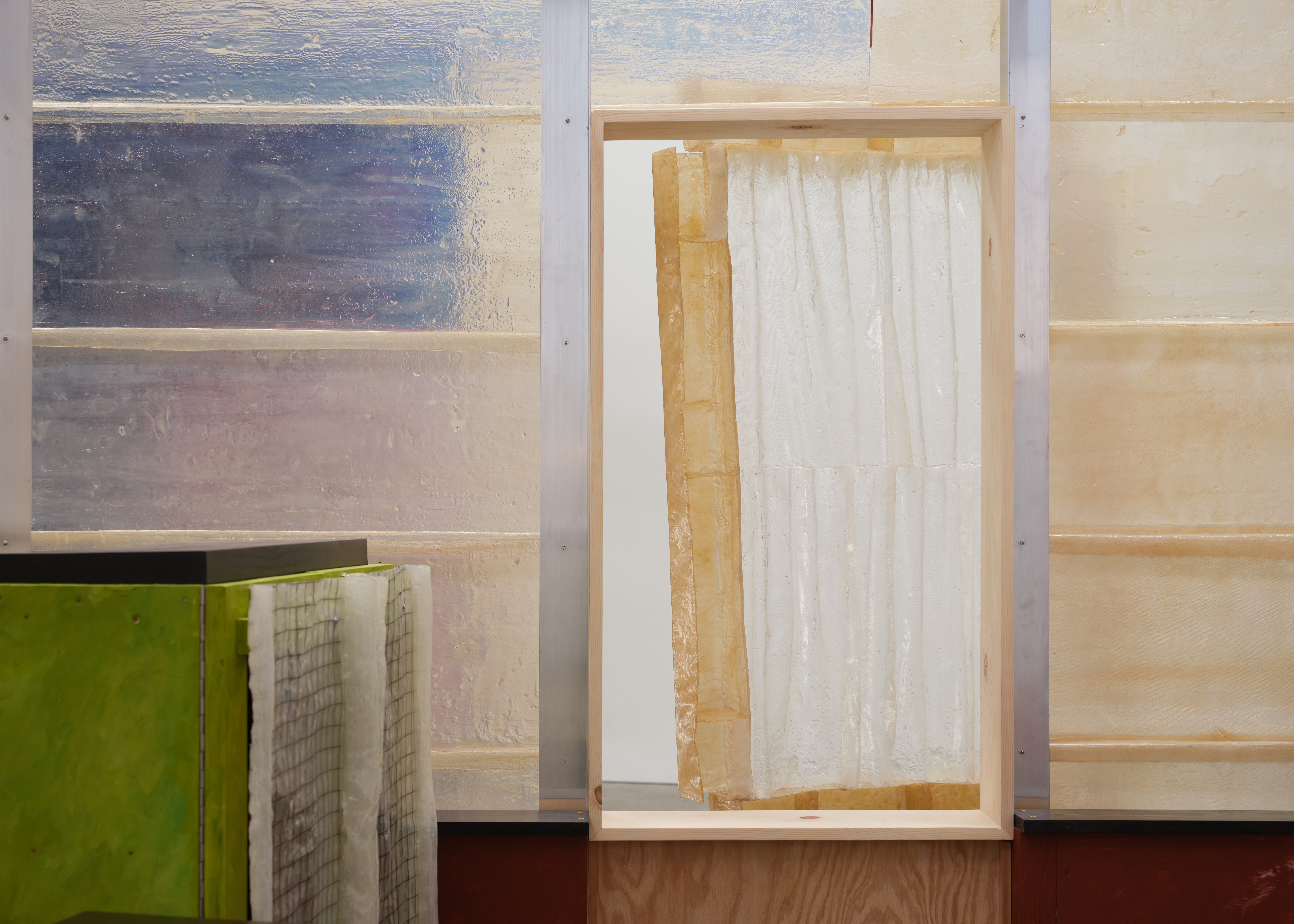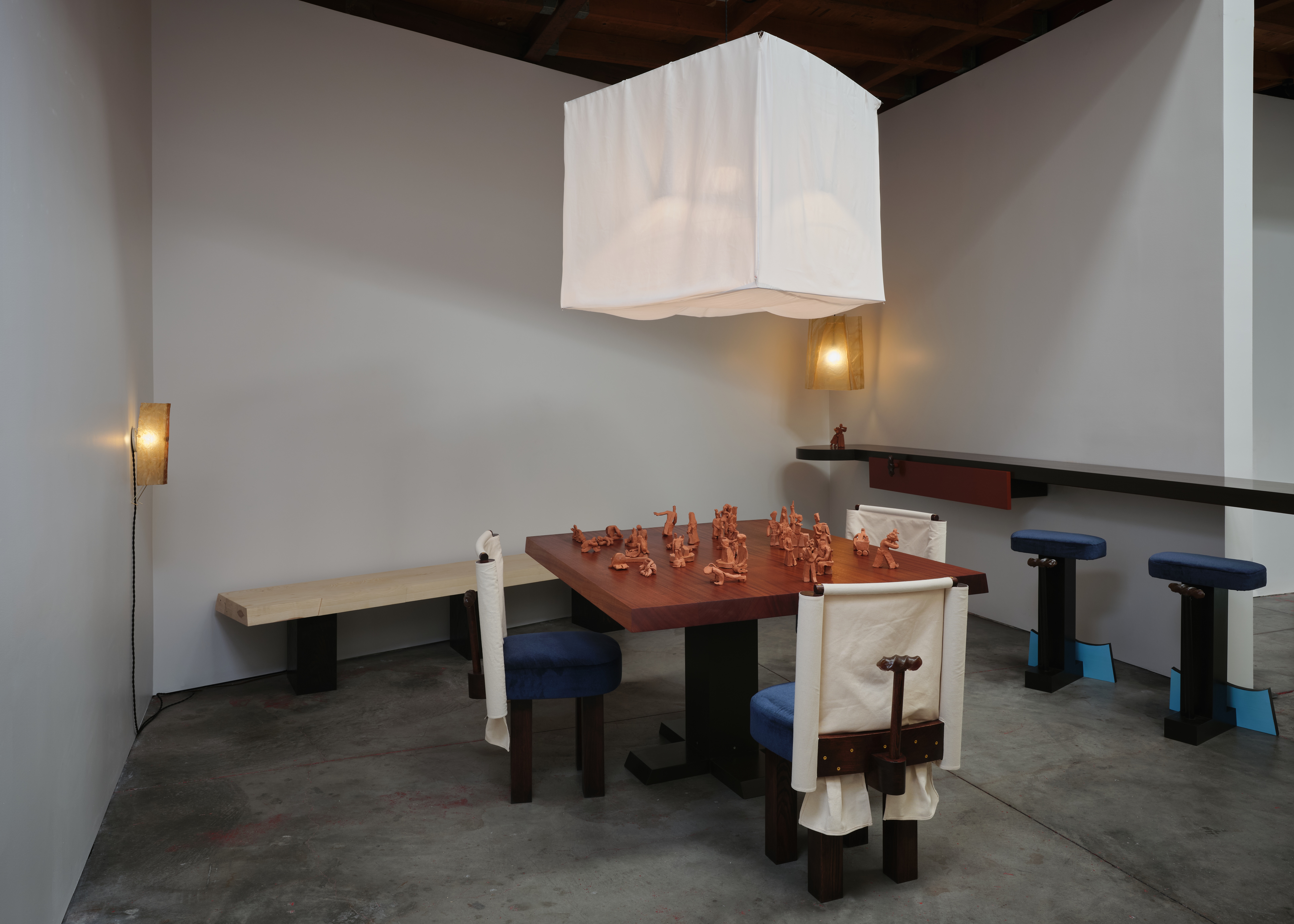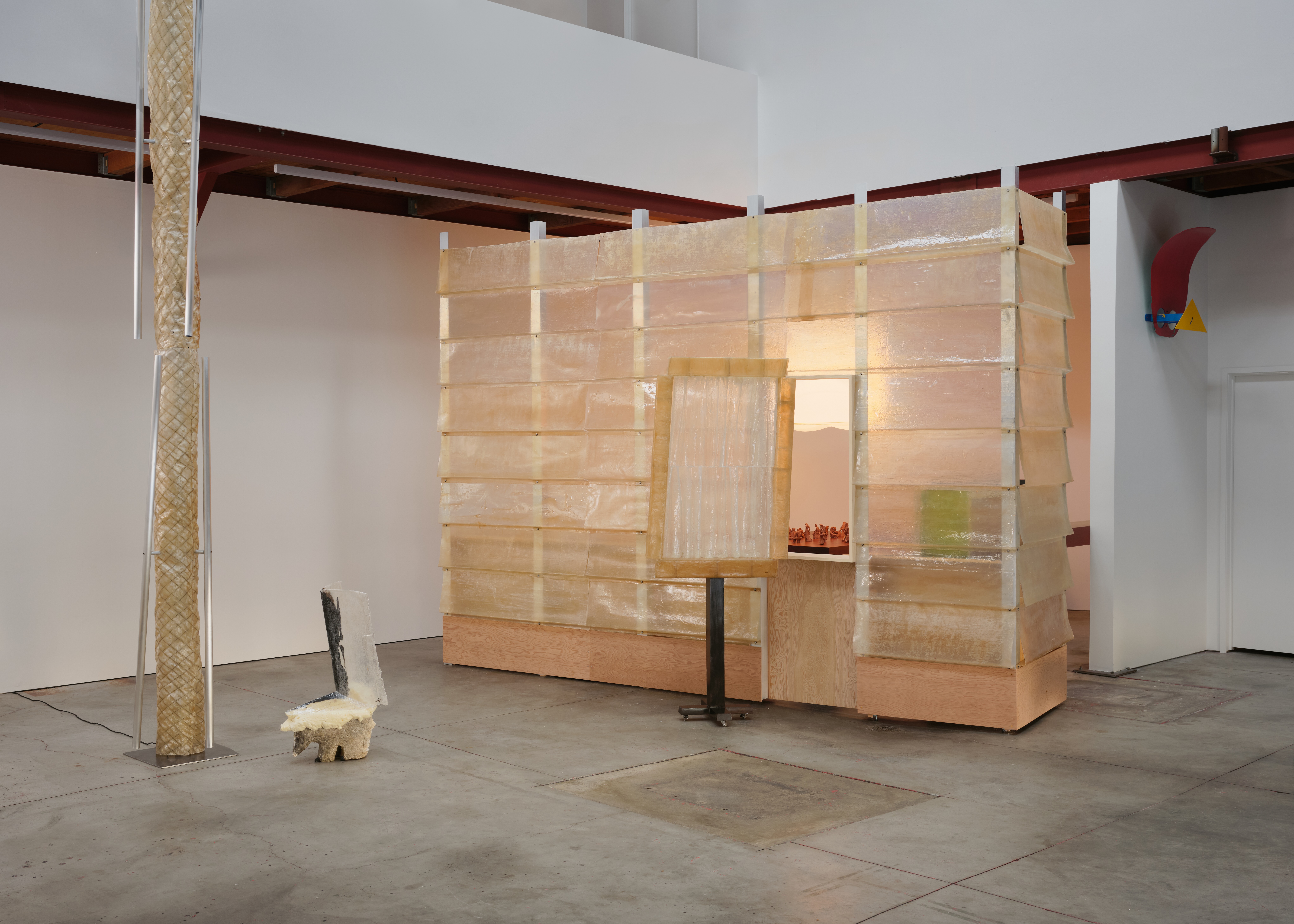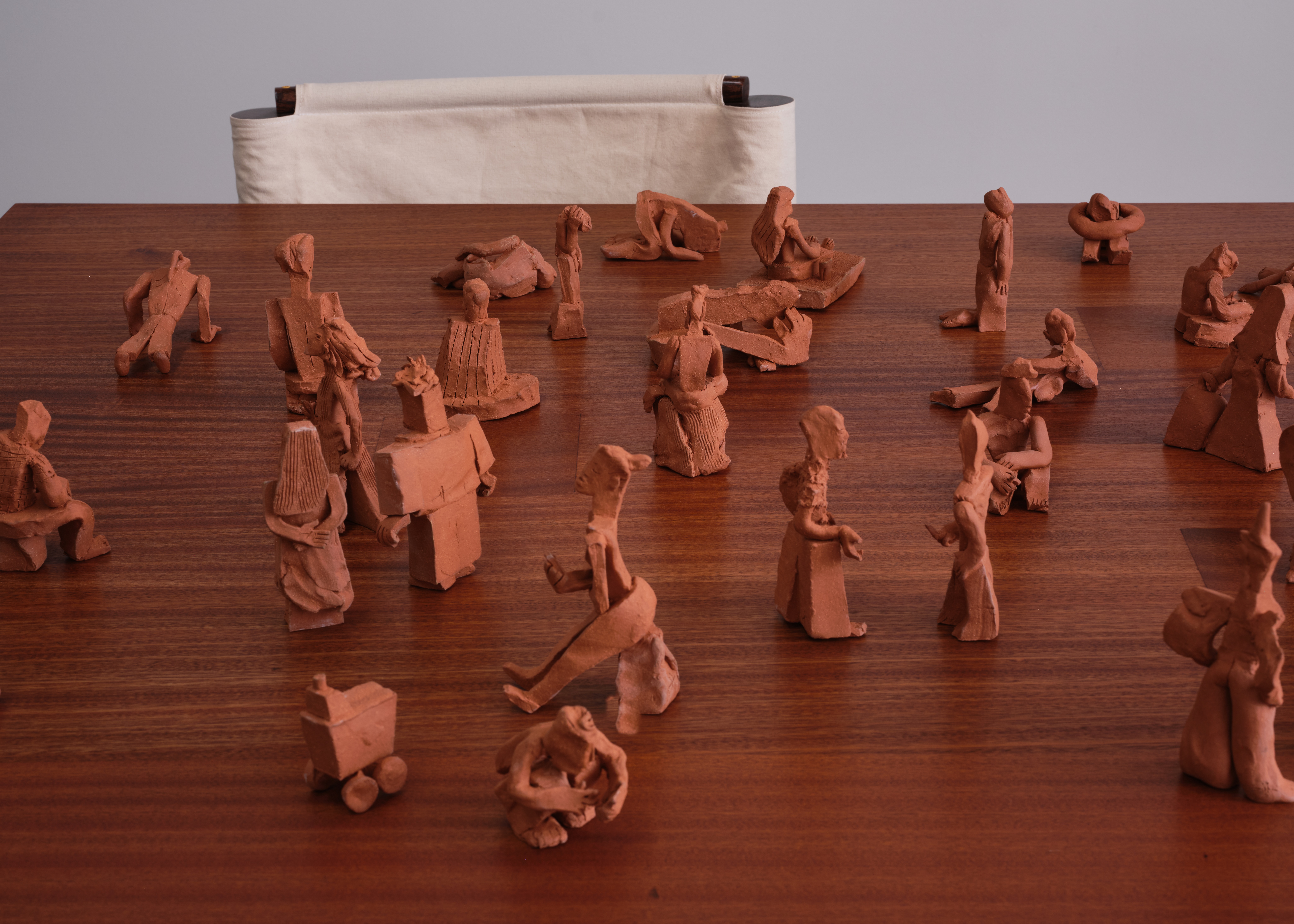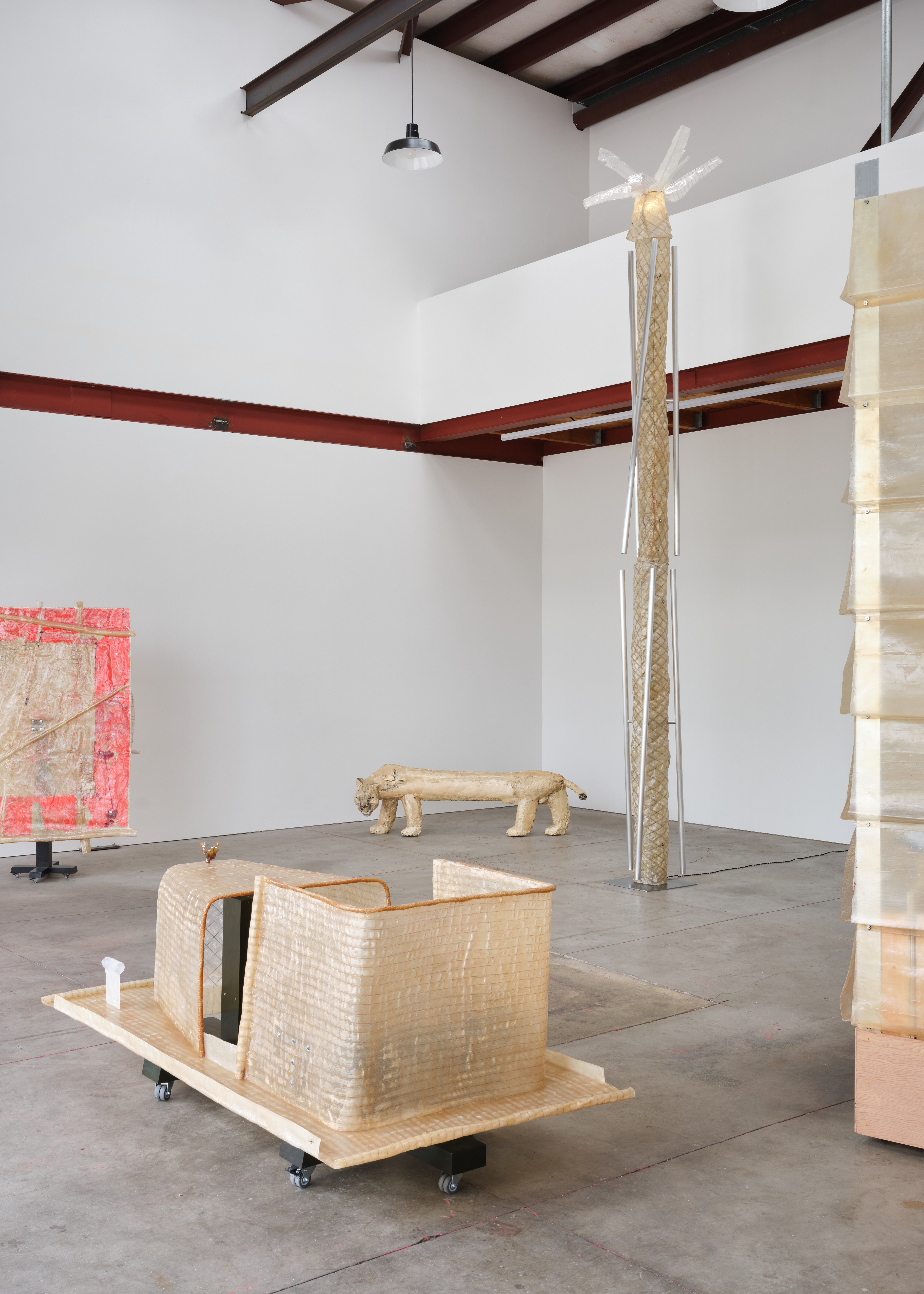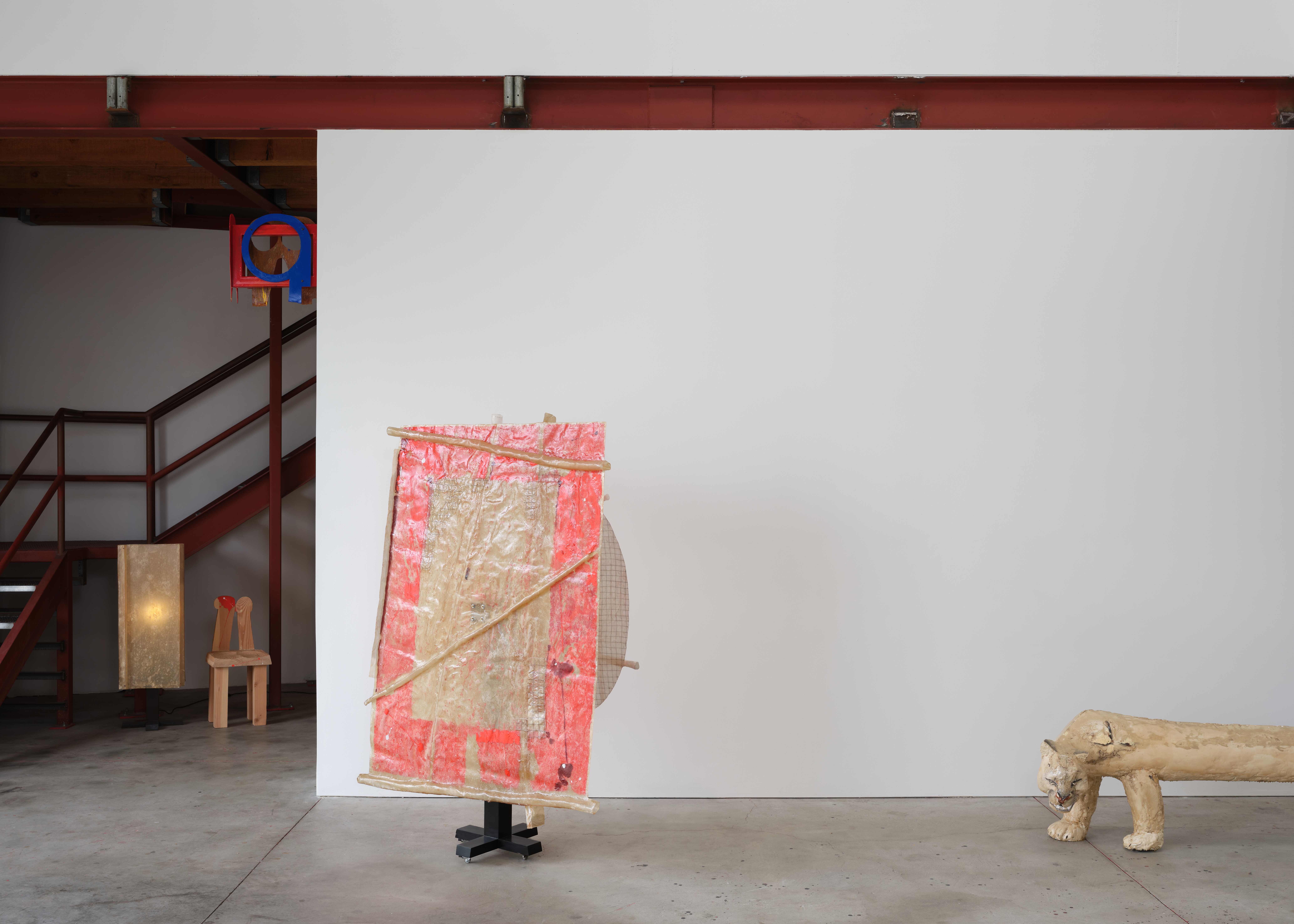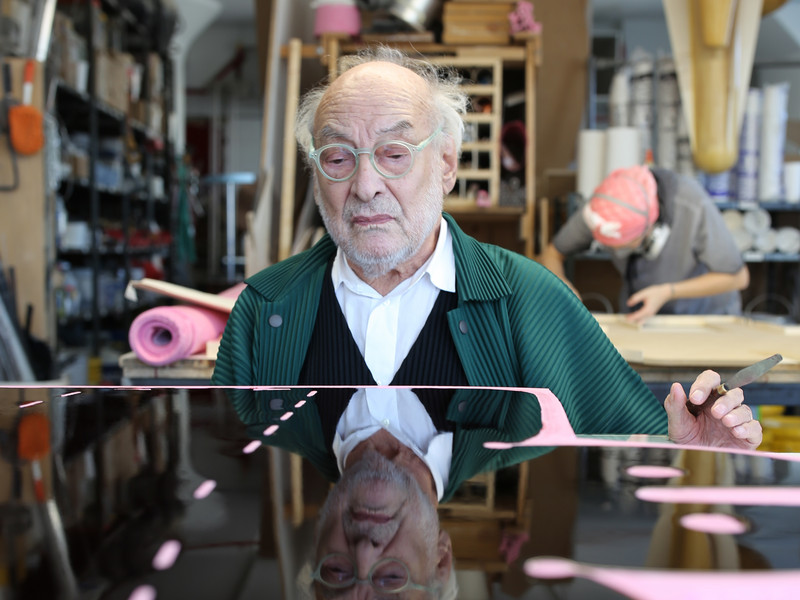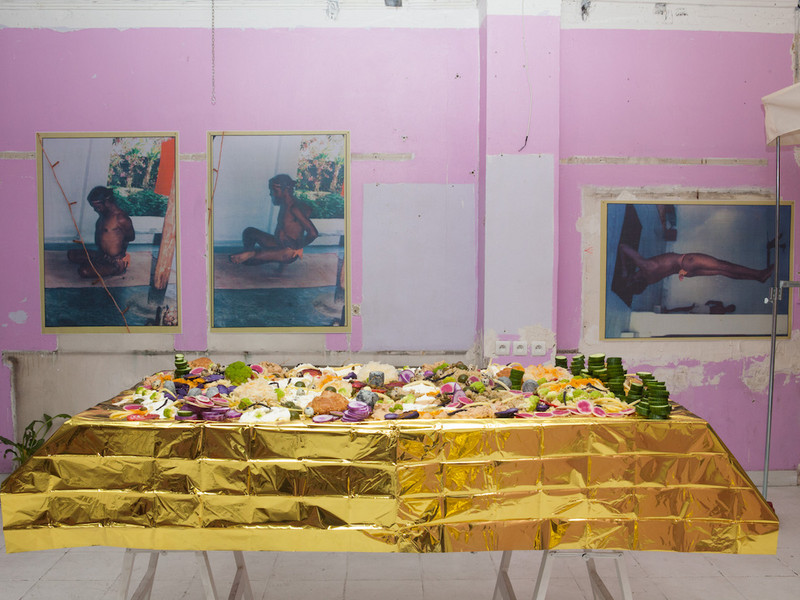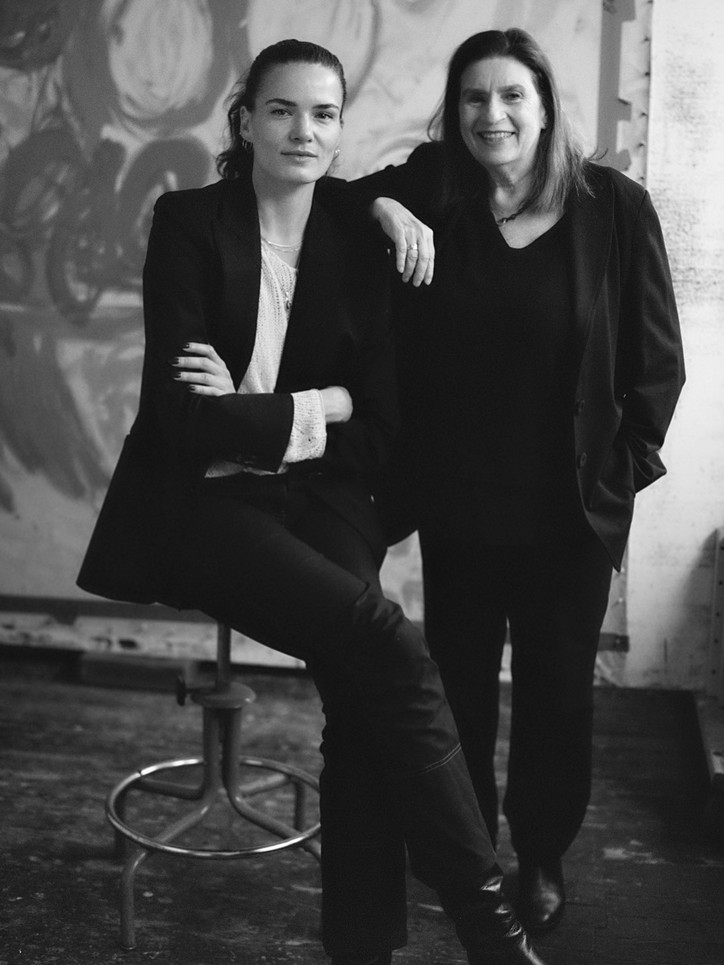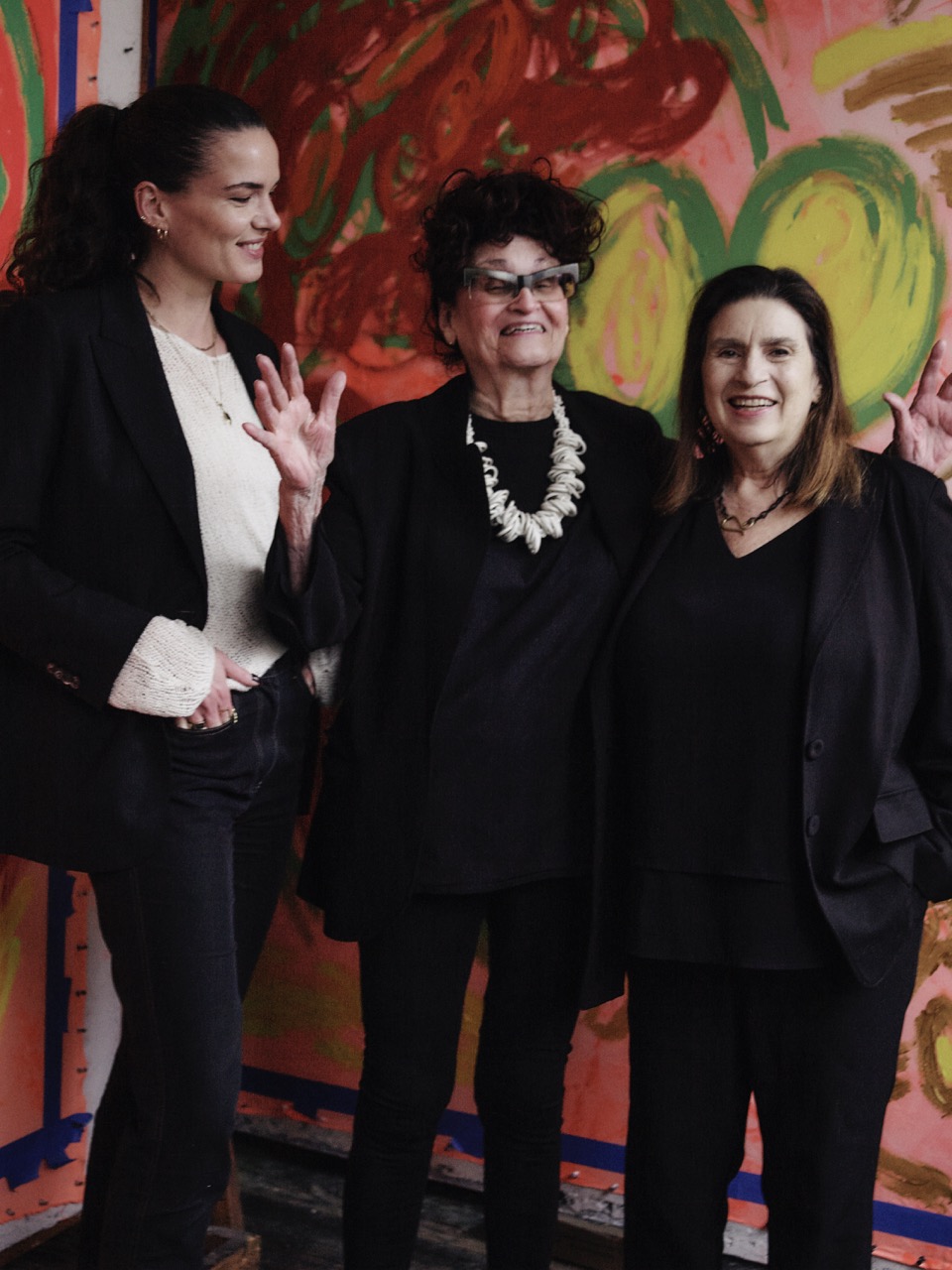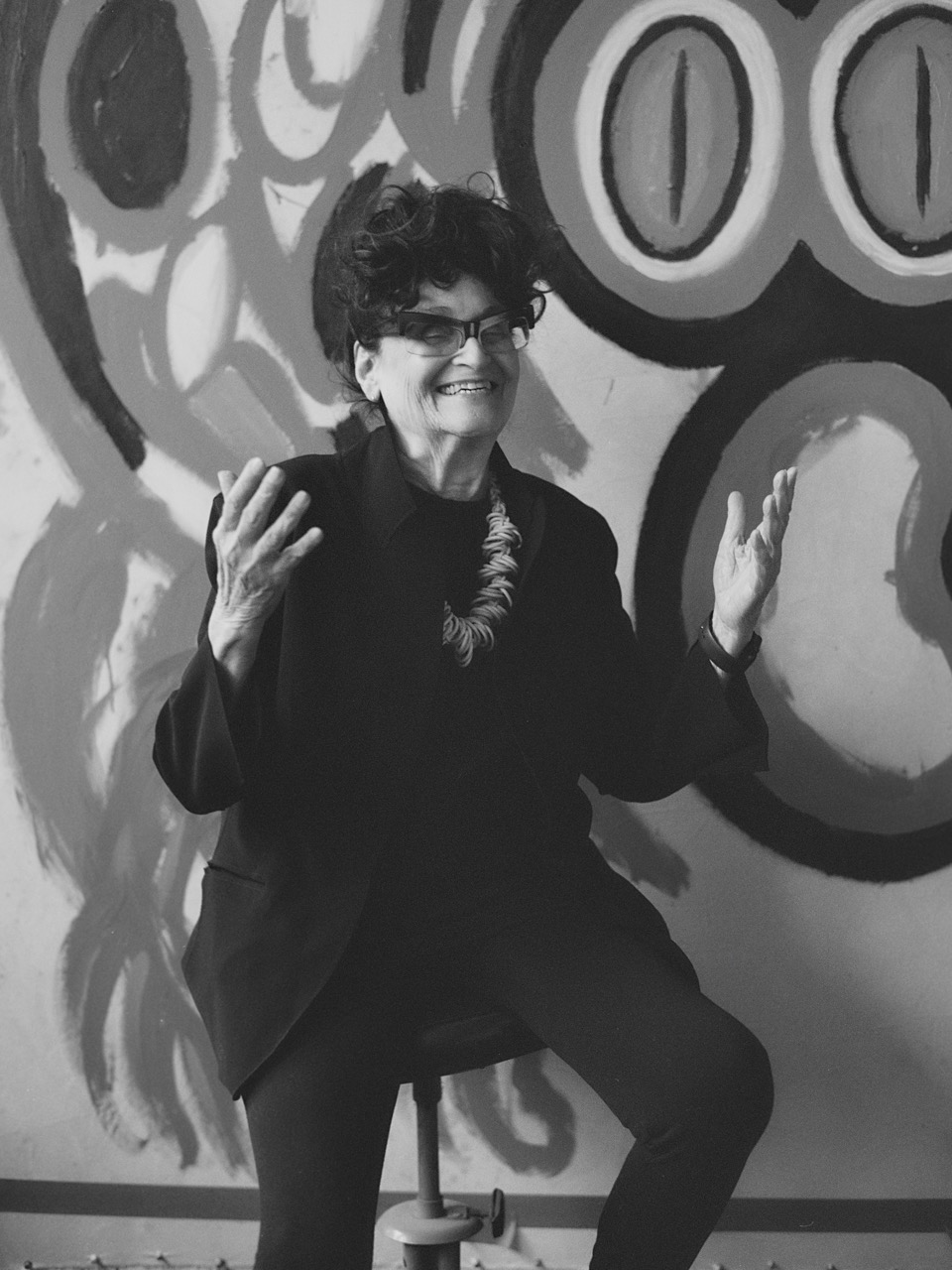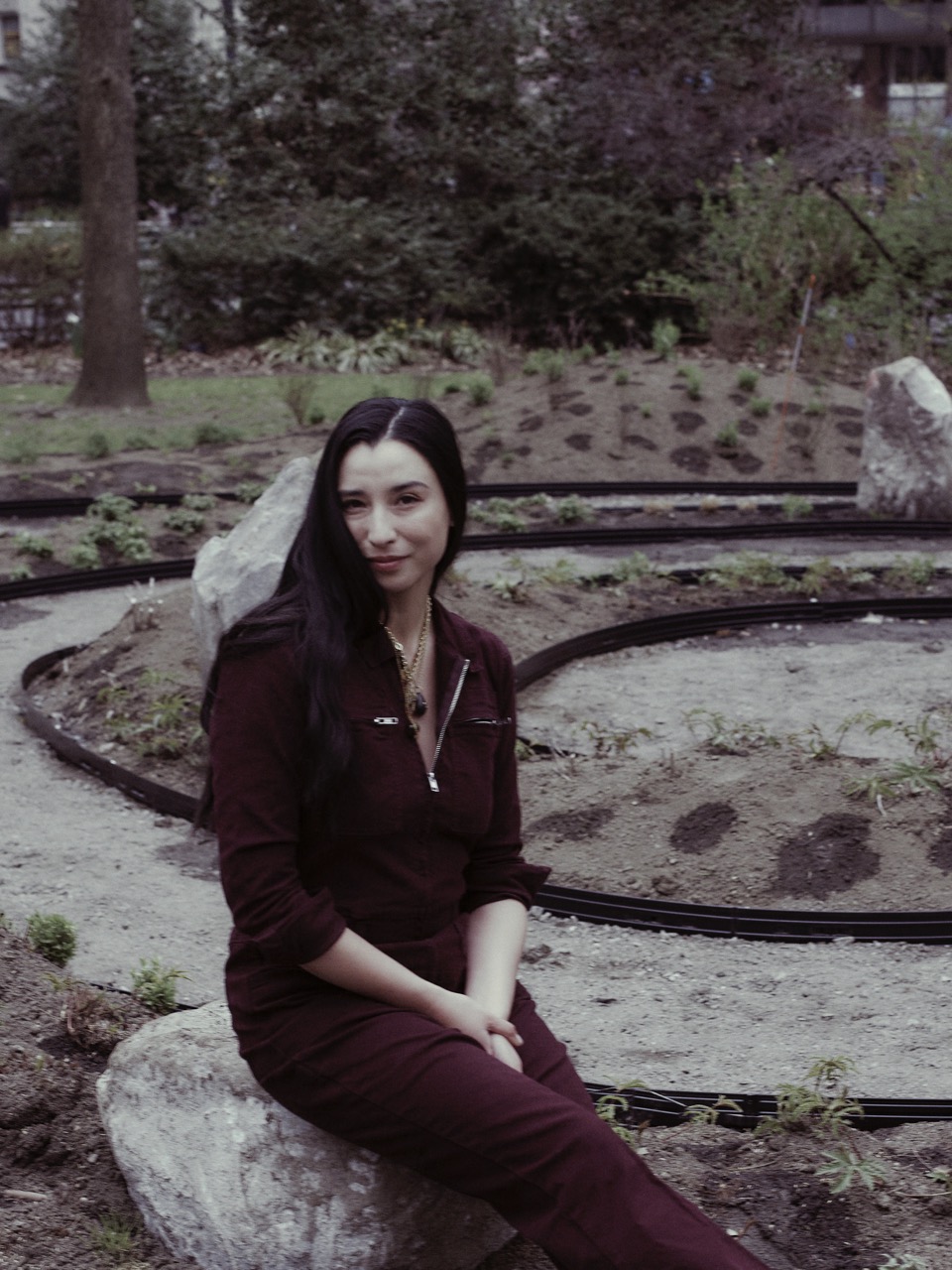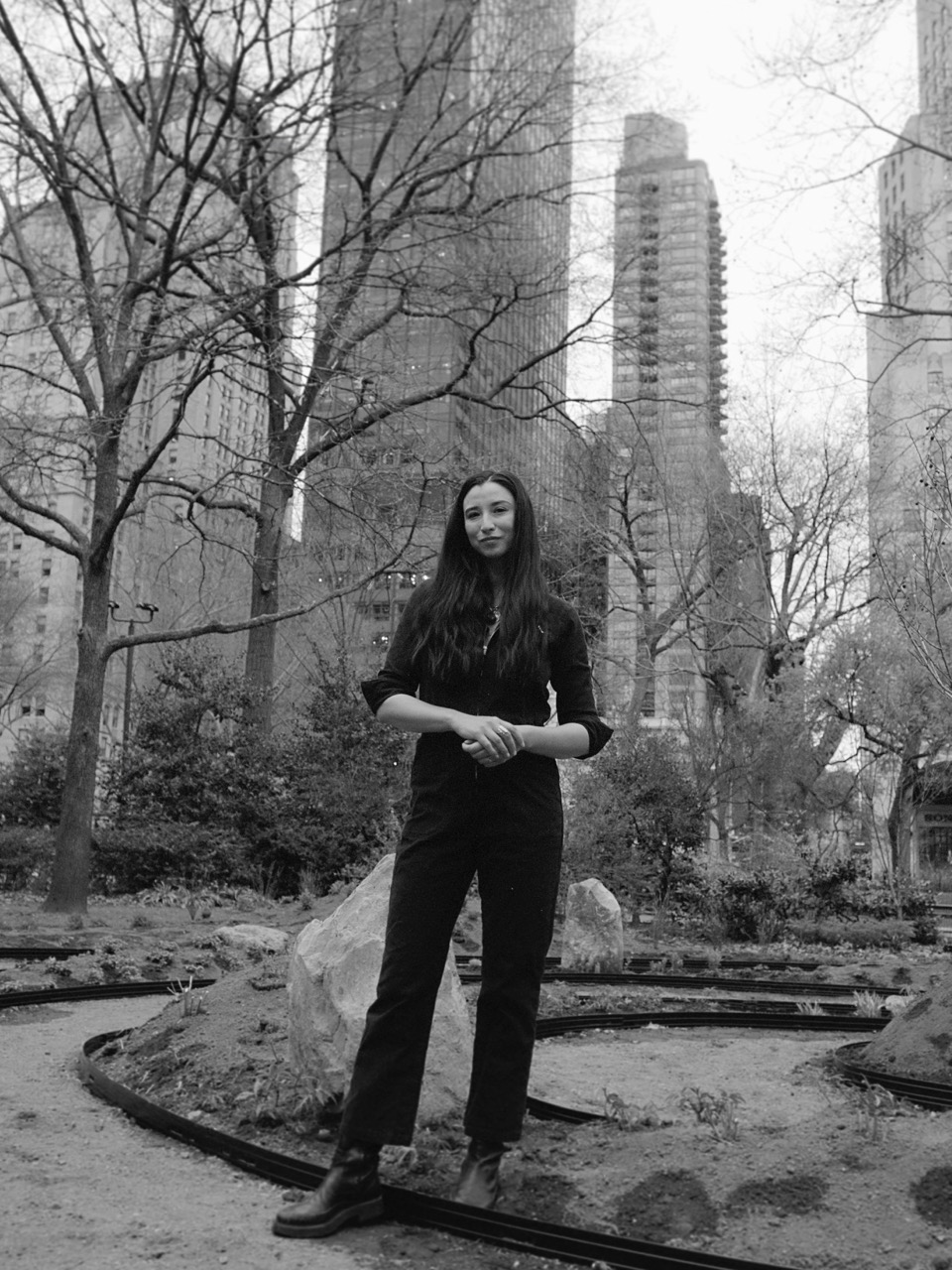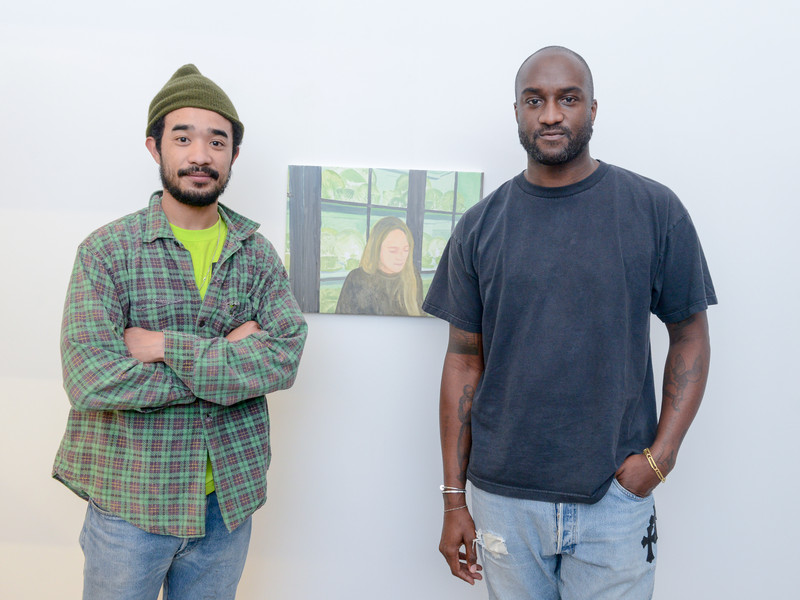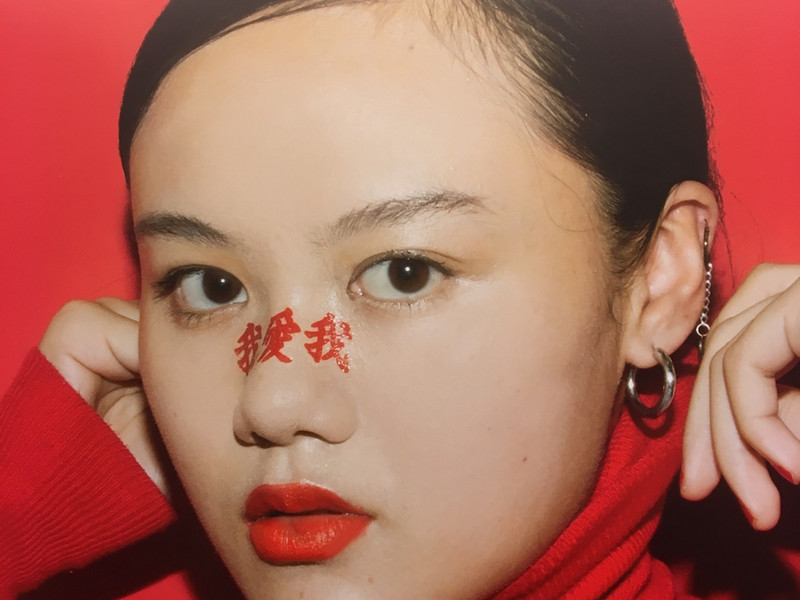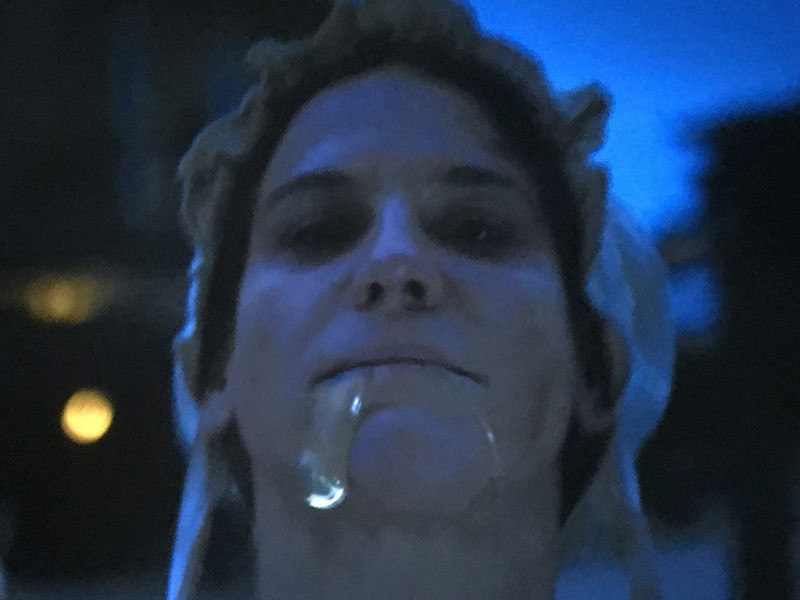King Pleasure: The Basquiat Sisters
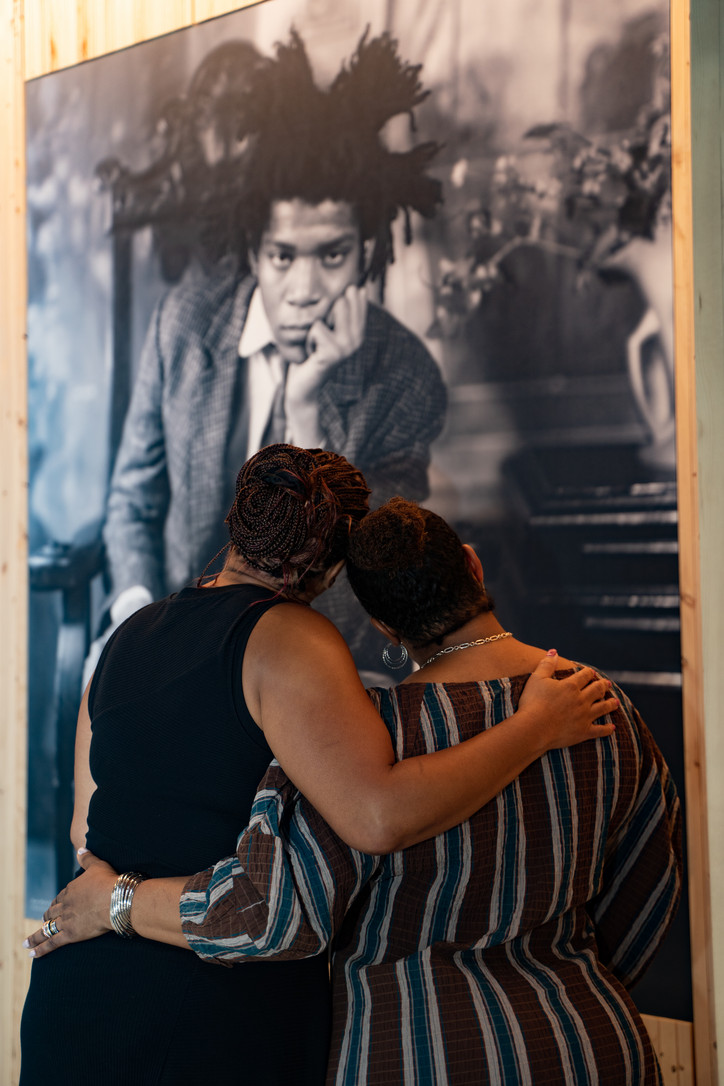
Nonetheless his impact can be seen everywhere even in the present day. You see, the greatest creators, and celebrities of our time referencing Basquiat and the most prominent fashion brands are utilizing his images to fuel their fashion campaigns. Basquiat was so prolific that at times you can forget that he was also a human just like everyone else, with a family who has spent years processing the life and death of Jean- Michel.
I touched base with Jean-Michel’s siblings, Lisane Basquiat and Jeanine Heriveaux who have just curated the phenomenal King Pleasure exhibition in Chelsea NY, to get the inside scoop on the making of their current exhibition, and their plans for building and celebrating the legacy of their brother, Jean- Michel Basquiat.
EO— I just want to start off by saying that it is an absolute honor to be interviewing you both. I’ll just jump right in. As an estate, how do you want to take control of Jean-Michel's legacy in a world where so many people feel they have a stake and claim in telling his story and, in the process, shaping his legacy?
JH— I don't think we want to try. We already have control of Jean-Michel legacy. That's something that our father Gerard Basquiat did very early on to put a stake in the ground that Jean-Michel had a family. He wasn't necessarily public about it, but more action-oriented toward ensuring that people understood that there was a family that Jean-Michel belonged to. There are many narratives out there, and we wanted to ensure that there was context around how he came to be the man he was. So the show tracks how he became the artist, the many facets he possessed, and the layers of all the things that were introduced to him from a young age.
LB— Our father did have his own mission in terms of what he wanted to do regarding showcasing Jean-Michel's legacy, but if you're a parent losing a child much sooner than you anticipated, it's tough. It was difficult for him to speak out publicly and do interviews, and also for him to attend exhibitions. Jeanine and I were also very private people up until eight years ago. We had our own private lives, raising our families and having our own careers. We realized that stepping into this, we had to do something a little different because the family's voice wasn't there. We knew that it would be important for Jean-Michel but also for the legacy of our children to step into that. It was important for us to speak our perspective on our brother.
EO— I think it's very powerful, and you can feel that when you see the show. I've seen other exhibitions of Jean-Michel, but yours did a great job of displaying that intimate connection. I noticed in visiting the exhibition that you want to use Jean-Michel's legacy to support emerging artists. When I visited the show for the photoshoot, I saw that you are creating programming for the larger New York City arts community. This includes talks, screenings, dinners, etc. I think that's amazing. So can you talk about the importance of fostering community with Jean-Michel's legacy and how this is a focus of the estate?
LB— Fostering community is vital in every aspect of our lives. That's how we're able to heal, and it's how we're able to communicate with each other about the things that are important to us. The creative field is a lot more mainstream today than it was years ago when Jean-Michel was painting. The more mainstream it becomes, the more critical it is that there is a community around it and that people can bounce ideas off each other and collaborate and share their experiences. An example of that is the forum discussion we had last week or two weeks ago, where the discussion was about a creative's life, and it wasn't specifically about the technical aspects of it. It wound up being a conversation about the living of it and how you take care of yourself through it. So I am incredibly committed to building community, being part of communities, and supporting this ongoing conversation we're all having about different things. Creativity is one of them.
JH— It's also an extension of Jean-Michel himself. Jean-Michel was extremely generous, not only materially but also with his time and support. He supported other artists of the same time, and he tried to assist people. For example, he encouraged people to move to the states to have better experiences in the art world. We believe that this is something that Jean-Michel would have done if he was still here. He would have this type of support for emerging artists. So if we are creating an exhibition around him, this is a natural component that would be included that makes sense.
EO— So, is this a model you intend to bring to other communities worldwide? As I walked through the exhibition, I couldn't help but think about how it could translate well in so many different settings. I imagined King Pleasure in Paris, Sao Paulo, Berlin, or London. It would be brilliant if you could use NYC as a case study for using art to find ways to engage with the communities in these various geographic locations. Truthfully I think it could be the start of a foundation, and I'm just curious about your thoughts on that .


LB— So there are two things you're asking; one is specifically about King Pleasure, and you know we're figuring that part out. Right now, we're blown away by the reception to King Pleasure and the hundreds of thousands of people who have come. Nine out of 10 pieces of feedback are very positive. So that feels good. So we're processing that and figuring out what to do next. Then the second part of your question; I think that many communities exist today, and it's a matter of tapping into those and then maybe helping communities embrace each other. One thing I love about what we're doing is there is a group of more traditional artists, but then there's also a group of filmmakers and even a chef that is a part of the community. We're finding ways to bring existing communities together so that they can be very focused on what they're focused on and expand and meet other creatives expressing themselves in other art forms. There's also something to be said for paying attention to the importance of community and valuing generational legacy, which we can help facilitate through our work. However, we're not experts at that. We can do it and hope that people will take that and apply it to wherever it is that it resonates with their own lives and experiences, so we're doing all we can, and we're also hoping that others will take a look.
JH— When someone passes away, sometimes we get caught up with the money aspect of it, but it's about legacy and how we hold on to it. How do we honor each other and celebrate our ancestors and our families. So that's really the question that part of this project was looking to answer.
EO— There are so many possibilities of where you guys can take this community model, and I wanted to know if you were thinking about starting a larger foundation. Jean-Michel's legacy is so large in terms of the number of people worldwide who know his work. It's not only people who view themselves as part of the art world that know his work. I'm sure you can go into the favelas of Brazil or communities like it around the world and ask people about Basquiat, and they are aware of his work. In fact there are probably local artists in those places appropriating and using elements of his work or inspiration from his work in their own work. So I feel that the cultural experience of Basquiat is almost like this common thread that all these people can connect to each other with, even though they come from different backgrounds. So that was the impetus of that question.
LB— Honestly, I don't know if we're ready just now for a foundation. We have discussed it, but we like to be very intentional with our plans. In this project, we're dealing with the day-to-day. So as you know, this took two years to come together, but the plan for King Pleasure has been in place for about five years. So if we do a foundation, we want to ensure it's done right. We want to make sure that we have the right team in place. So it's not answering your question, but it is an acknowledgment that it's something that we're considering.
EO— Thank you so much for that. I appreciate that answer. I want to change gears towards the King Pleasure exhibition. I'm curious why you guys decided to go the independent route for this exhibition rather than partnering with the many institutions that would have jumped at the chance to let you curate this exhibition for them. I want to preface by saying that I think the independent approach is brilliant and when I first understood that was what was happening, I started thinking, why don't more artists do this? Not every artist can showcase without the cosign of a museum or a gallery, but for the ones that can, it presents opportunities for them to have more ownership of how they display and sell their work. I wanted to know why it was essential for you as an estate to take complete ownership of this exhibition in New York City.
JH— First and foremost as Basquiats, we have never done things from the traditional route. My dad came to this country at 20 years old because Haiti was just not what he saw himself long term. So as a pioneer, he left home and moved here. He met our mother and wanted to create a family. Jean-Michel, when he was 17, decided that the traditional way of going to college and wearing a suit and tie was not the way that he wanted to arrive. So he was a pioneer and went off to find his dream. In the present, we wanted to ensure that the narrative was ours and that it wasn't in any way compromised by what a curator or museum wanted to add. We wanted to make sure it was completely our vision and our story. So the pioneers that we are, we said we've never done this before, but this is how we want to do it. That's why it took five years. We had to ensure we could do it from all aspects, and we're so happy. It was a lot, but we're glad this is our route.
EO— I heard that the show was designed by Sir David Adjaye, which is fantastic because I'm a huge fan of his. I also heard that the design is mobile and can be transported to other locations. What was it like bringing this exhibition into reality, working with your team, and also, what was it like working with Sir David Adjaye to do this?
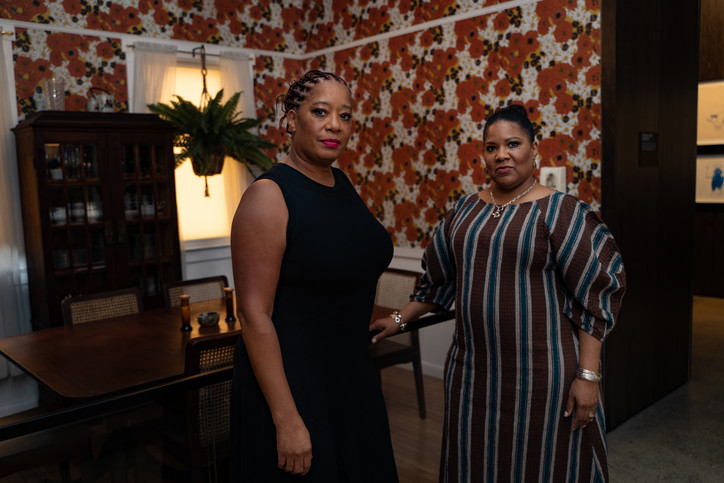
LB— So the team that we have supporting us in pulling this thing together is the best of the best. They are a phenomenal group of people. While Jeanine and I have the skinny on our brother, pulling together and curating an exhibition in a production like this is something we had not done before. So, with Sir David Adjaye, it was similar to what happened with the others in that we got on zoom because a lot of the planning for this took place during the pandemic. So we got on a zoom with him to talk about the possibility of him doing this with us, and within a couple of minutes, we realized how tuned and aligned he was with what we wanted to do. He understood our vision was for our brother's exhibition, and that was the thing that helped us to make the decision to work with him. He and his team have been phenomenal, and it was a really collaborative process. What we enjoyed about working with him and everyone we've worked with is that they understood and respected our vision and helped us realize it. So, whether that was Sir David Adjaye and his team coming up with the physical design with us or Abbott through Pentagram coming up with the brand identity, it was really a fun process. Eye-opening for me personally because curators would come to us and ask us for things, and I'd be like, "ok, we're getting it ."This process humbled me to the work curators do and how challenging and overwhelming the process can be. The team we had was incredibly supportive, accommodating, and a lot of fun.
JB— Yeah, I agree that we have had a phenomenal team. There was really no detail that was left out. We dug really deep. We also had people on the team researching things for the show. For example, the wall in the Palladium with all those videos. We have someone on the team that found that video in Australia. We wanted to ensure that we were being as faithful as possible to the time and bring out some details that were not shared in the past or were unknown. Our goal was to give an intimate perspective Jean-Michel. So from design to curation to graphic design, everything came just came together in a way that exceeded.
EO— The exhibition is truly amazing. It hit me when we were in the exhibition, and my sister was shooting you guys for this. It felt really special seeing you interact with pictures of Jean-Michel and being there with my sibling, who is also a creative. It was one of those moments where I was like, I really am an art journalist, no need for any imposter syndrome anymore. That being said, one thing I love about the show is that it's so rooted in the family, so I'm interested in how the next generation involved in Jean-Michel's legacy?
LB— One of the things for us was that we had a chance to live our own lives and to create our own identity as human beings, as adults, as professionals, and that was a wonderful thing, but it also created some angst for us when our father passed away more suddenly than we all expected. Jeanine and I were in this position of having to figure things out. The great news is that as time passed, I realized how much information he had shared, because our father was a storyteller and would tell us a lot about what was happening. At the same time, it wasn't the way that I would want my children to receive something as enormous as the baton of the Basquiat estate. So as you know, our kids have been involved in this exhibition. The King Pleasure exhibition has been the first project where we started to bring our children into the estate and help them to understand what we do looks like. They're helping out in different ways, and I think it's also important that they find their way as well but do it in parallel. This is a little different from how our father laid it out. For me personally, we have two different families. It's important that they find their way and, in parallel, also learn about the estate. Jean-Michel is huge. There is a lot of information out there and a lot of asks involved with running this estate. There's a lot to it. We have to think about and navigate things that are very different from what our parents had to navigate. It's really important for our children to understand what their uncle's estate means and what it means to help to manage that estate. Eventually, we hope they want to come together as a team to move it forward when Jeanine and I aren't here anymore. It's also important that they and they make their way and not get lost in the estate, either. However, that's just my personal opinion.
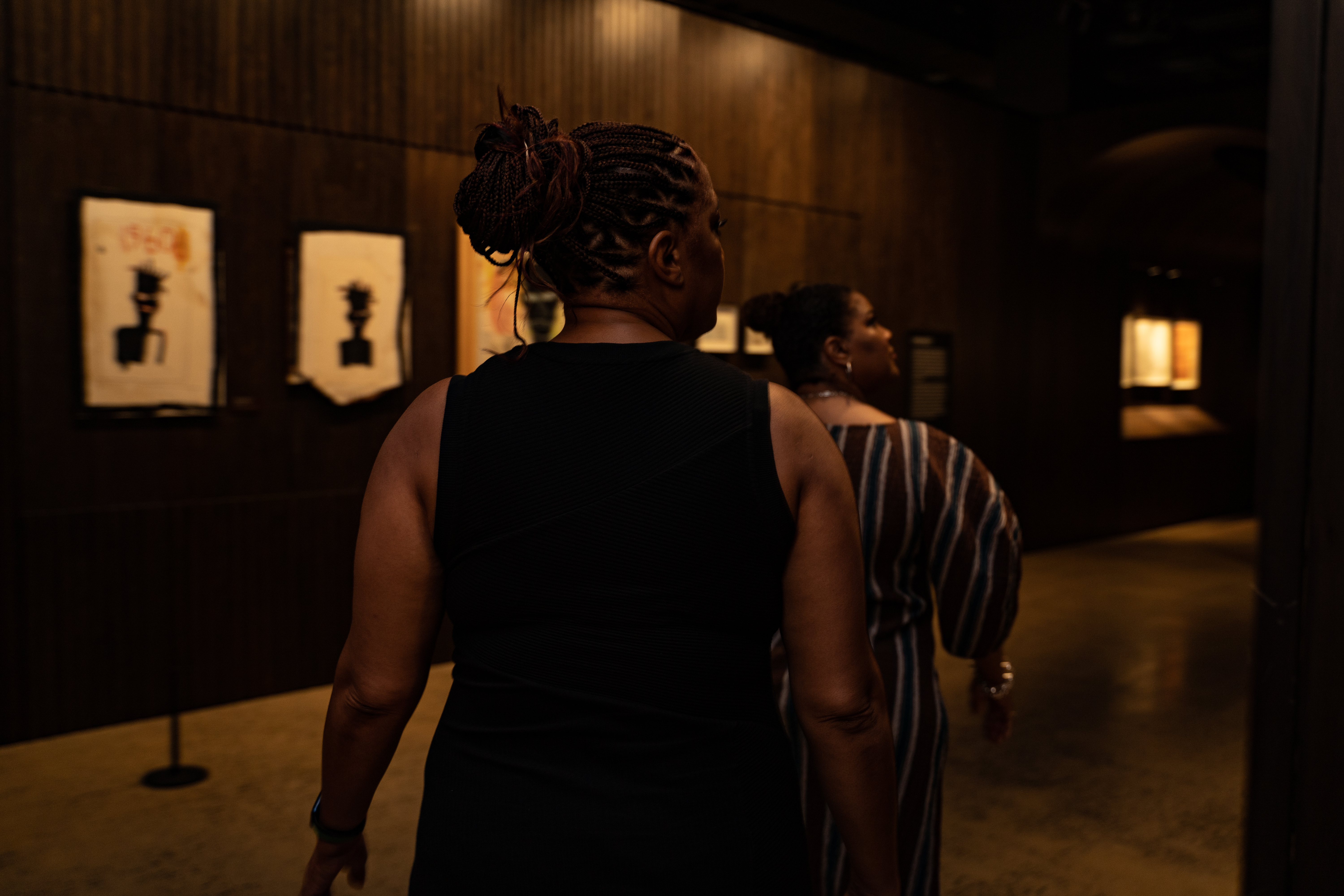
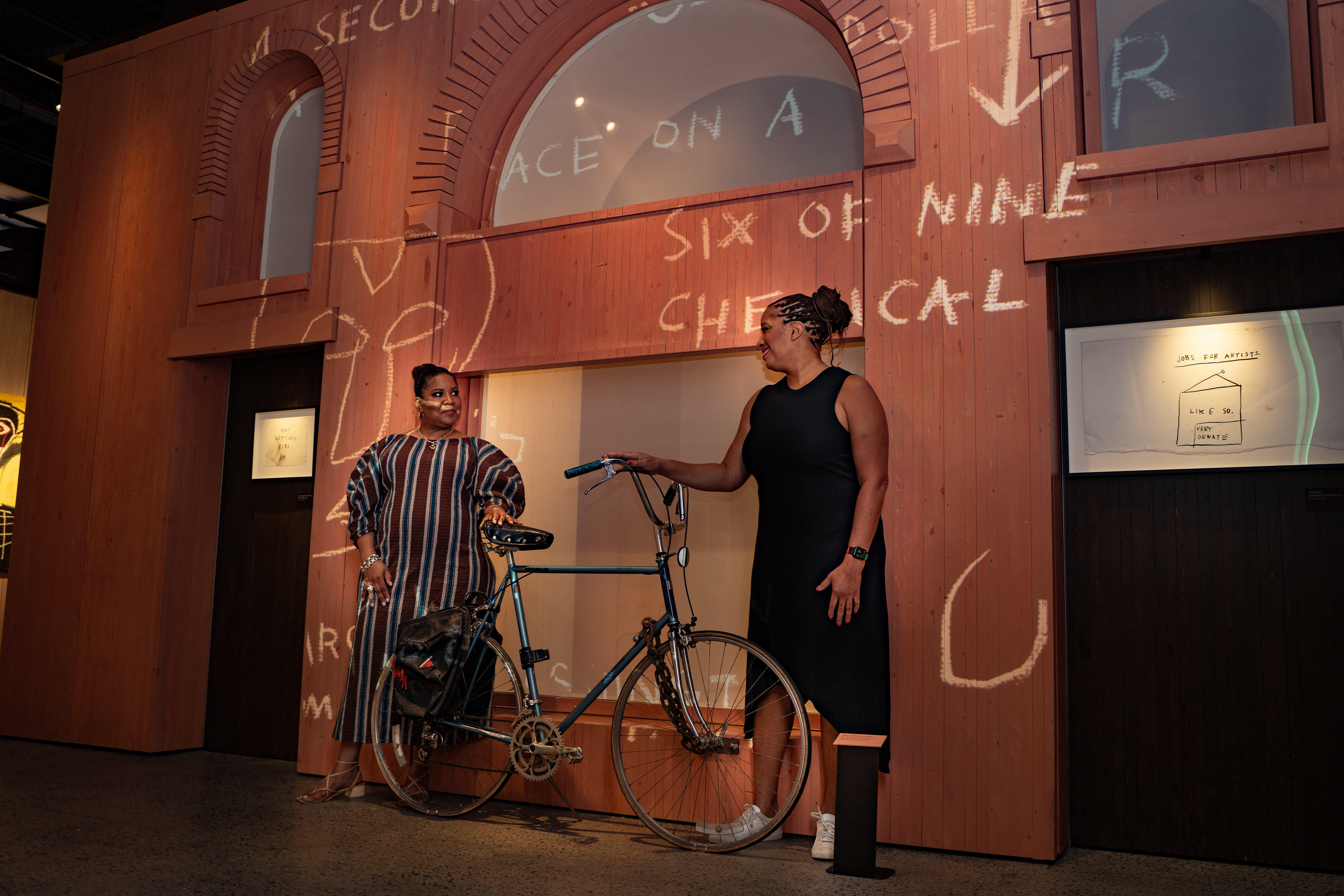
JH— I also believe they should do it in parallel unless one of them decides that they want to take this on wholeheartedly. I don't begrudge that, but at the same time, all three of my kids have their own creative paths and ideas that they want to add to the world. So they should do that and then also understand this world. They should weave back and forth, and if they decide that they would instead follow their passion, that is fine too. What's most important is that they understand the legacy that their uncle has left. All of our kids entered this world with this incredible talent of their own and creativity, and I'm really excited to watch them figure out what to do with that.
EO— Well, I'm sure that talent runs in the family, so I'm sure that they'll figure it out at some point.
JH— Being a Basquiat helps, but it's also about self-identity and knowing who you are while navigating and managing someone else's legacy. It's an interesting place to be and an interesting space to navigate.
EO— So I guess my last question is basically, what is it like being two black women who did not grow up in the art establishment who are running one of the most important art estates in the world.
LB— I think the fact that we didn't grow up in that world helps us because the focus for us is not the art in the sense of its financial value. The value for us is Jean-Michel's legacy on the planet through his work and his art. So we are focused on how to use that platform to give his message to other creatives, artists, and other artist families, who are doing the same thing. That is more important to us than the traditional model. I'm very grateful, and it's an incredible blessing, and at the same time, that blessing comes with our parents losing their child. That's a really hard thing when a parent loses a child.
LB— Jeanine and I have spent 30 years grieving the loss of our brother in parallel with our parents, and then we dealt with losing our parents. So the ability to support Jean-Michel and to contribute to his legacy is something that we're very appreciative of and very grateful for. It allows us to work together and create something with family, which is a blessing. It's an exciting position to be in because we are doing something from our heart for our family, which has an incredible impact on other people and the world. It feels good to have people come up to us and talk to us about our brother, how he has impacted them, and all the ways that Jean-Michel continues to impact the world through his voice. In some ways, to Jeanine's point, we are focused, and because we're so focused, it really helps to keep us grounded. Because at the end of the day, we are the sisters of Jean-Michel Basquiat and run the estate, but we're also the children of a Haitian immigrant and a Puerto Rican mother. We grew up in Brooklyn and grew up listening to stories of Papa Doc in Haiti and stories from Puerto Rico. Those are the type of things that we're grounded in more than anything else. The estate is something we do, but it's not all of who we are, and I was talking on a panel last month, and I was on a panel with Hill Harper, and it was about art. Hill made this comment where he said to the audience something like, "let's level set what's going on here with this woman and her sister; they are managing an estate that ultimately impacts," and he threw out some crazy number, and for me, it was very grounding. Like wow, it's not just the licensing that we do; it's how the license deals affect those companies. What they do as a result of that and it really grounded me in just how expansive the work that Jeanine and I do is. The week starts like, "oh, it's Monday; what are we going to do today?" But what we do is impacting a large company that is looking to grow its business. But then it also affects a person who is an artist or a chef or creative, or a child who wants to be an artist but doesn't have anyone in their family that understands that. Then you have King Pleasure and what we are trying to build with that. It's a little long-winded, but there's a lot of feels to what Jeanine and I are doing. I feel incredibly honored and grateful to be doing this with my sister and doing something within our family. At the same time, it's a challenge. It's different from anything I've done before, and I've done some things in my life. Jeanine has done some things in her life. We learned how to be curators by doing it. We learned how to manage the Basquiat estate by doing it daily and working really hard. So the whole experience of this King Pleasure exhibition has been deeply gratifying.

